






















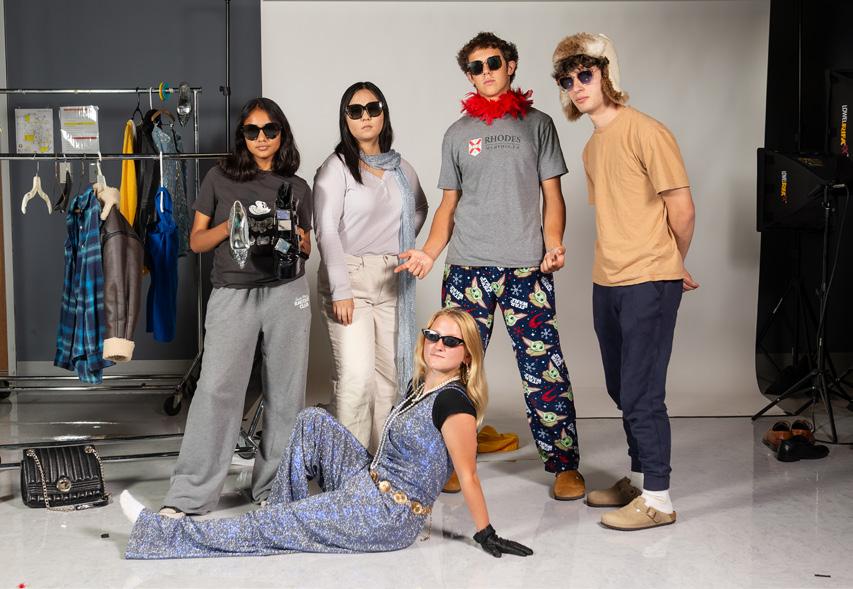
High school is a battleground where students, armed with hoodies, jeans, graphic tees and sweaters, face off against the latest fads and trending accessories. Clothing is the most evident marker of our personalities, and beneath each outfit lies a deeper story of culture, class and aesthetic preferences that can foster connections and enable self-expression. However, the unspoken pressures of navigating the modern wardrobe, from adhering to microtrends on social media to buying based on brand perception, often promote conformity over personal style. For this issue’s in-depth, we cover the ways that fashion can foster both unity and division as a result of societal and environmental influences. Elsewhere, we examine the future of safety measures at the high school and feature two students and their work on-stage at the Muny. We give our takes on college endowments and the Beetlejuice sequel, “Beetlejuice Beetlejuice.” Lastly, we spotlight athletic clubs and three new soccer captains.

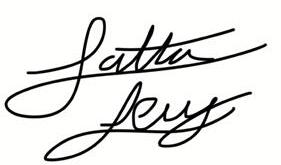
Emily Liu Lathan Levy
CREDITS: Editors’ photo by Vincent Hsiao. Front cover design by Celina Zhou. Back cover design by Fiona Van Allen.


EXECUTIVE EDITOR IN CHIEF
Arti Jain
MANAGING EDITOR IN CHIEF
Lathan Levy
DESIGN EDITOR IN CHIEF
Emily Liu
COPY EDITORS IN CHIEF
Katie Myckatyn
Will Kodner
ART EDITOR IN CHIEF
Kelly Zhang
PHOTO EDITOR IN CHIEF
Vincent Hsiao
IN-DEPTH EDITORS
Alzhraa Mahmoud
Celina Zhou
NEWS EDITORS
Marie Demkovitch
Cindy Liu
FEATURES EDITORS
Grace Huewe
Ira Rodrigues
OPINIONS EDITORS
Ella Bender
Grace Kweon
HEALTH & SPORTS EDITORS
Mason Eastman
Ryan Snyder
ARTS & ENTERTAINMENT
EDITORS
Sara Rohatgi
Aaron Lin
STAFF MANAGER
Nyla Weathersby
COMMUNITY ENGAGEMENT
LIAISON
Ishaan Pandey
COLUMNIST
Frank Chen
ASSOCIATE EDITORS
Michael Zegel
Jay Heintz
NEWS STAFF
Adela Gingrich
FEATURES STAFF
Loukya Gillella
Katie Jansen
IN-DEPTH STAFF
Amelie Lock
OPINIONS STAFF
Madeline Fong
ARTS & ENTERTAINMENT
STAFF
Tiya Kaul
Nora Brunnquell
HEALTH & SPORTS STAFF
ane c e e
Vicky Derdoy
PHOTOGRAPHERS
Isak Taylor
Lilly Jacks
Levi Peace
Avery Berg
ARTIST
Fiona Van Allen
WEB EDITORS IN CHIEF
Josh Devine
Madeline Awad
WEB STAFF
Nathan King
Medha Chode
Max Karsh
Nina Ye
Meg Myckatyn
ID EDITORS IN CHIEF
Sylvia Hanes
Maya Mathew
Ella Braig
ID STAFF
Isaac Zelinske
Josie Stout
Annabelle Reagan
Emily Pan
Kaichen Chou
ADVISERS
Sarah Kirksey
Abigail Eisenberg
Ladue Blue
The Jansen Family
The Fong Family
Gupta-Suri Family
Jennifer Poindexter
Gold
Kathleen Mercury
Beth & Paul Cherner
The Kurtzman/Levy Family
Radhika Jaladi
The Poindexter Family
Blair Keltner and TJ Tennison
The Brunnquell family
The Jain Family
Yanfang Jiang
Anonymous
Silver
Larry & Jan Bender
Will Bender
Viragh-Mayo Family
The George Family
The Bucholz Family
The Li Family
Paula Hammonds
Jeanette Turner
Noah + Katie Weathersby
The Nieder Family
The Logan Family
The Cormier Family
Friendly
Rory Lustberg
Lohse Family
The Drobak Family
Ravi + Hima Kuppa
Dr. Sumesh Kaswan
Dossie

October Calendar
Oct. 10: Parent Teacher Conferences/Picture Retake Day
Oct. 11: Early Release Day
Oct. 17: Early Release Day
Oct. 18-21: Fall Break
Oct. 24-26: Fall Play
Oct. 29: Freshman Parent Meeting
Oct. 30: Board Meeting
For the month of October, the UNICEF club will gather money for their cause through door to door ‘trick or treating.’ In addition, the club will accept online donations on their website. The money donated will go to children of other countries that are in need of food, water and medical support.
Key events during October

LEFT: Molly Roberts (12) and Fearless Brooks (12) build a wall for a model house Sept. 16. Before beginning with the actual project, students worked on constructing a small model of the house to get a feel for the work that the project requires. “It’s like a real life construction site,” construction teacher Bill Edwards said.
By Adela Gingrich
Staf
In his contruction innovations class, woodworking teacher Bill Edwards is conducting a unique project. Within the next two years, Edwards’ students will be occupied building and constructing a small house, that consists of all characteristics and furniture of an actual house. Throughout the project, Edwards emphasizes the importance of communication and collaboration with his students.
St. Louis has many popular fall events this coming October, one being “Boo at the Zoo.” A fan favorite event held at the St. Louis Zoo, Boo at the Zoo is known for its festive decorations, entertainment and specialty food and beverages. This Halloween experience is open Oct. 10-30, every night from 5-8:30 p.m.
“We’re learning all these teamwork and team-building skills,” Edwards said.
This is not Edwards’ first time doing this project, but rather one he adopted earlier in his teaching career. For the past seven years, he has evolved this project and brought it to other schools, providing woodworking students with a realistic, hands-on learning experience.
“As I’ve taught it year after year, I realized how much it builds up social and emotional skills and people skills with each other,” Edwards said.
Reminders for the college application season
Deadlines: Keep up to date with the application deadlines that are required with the schools you apply for. For students applying early decision or early action, most schools have an application deadline of Nov. 1.
Letters of Recommendation: If you are in need of a recommendation letter from counselors, remember to put a request in Naviance and submit a student survey.
Scholarships: College Board’s College Scholarship Service has opened up for students looking to apply for a scholarship.
Questions? For any questions regarding post-secondary education and deadlines, the college and career counselors have set up Walk-In Wednesdays for students to come and chat about their applications without the need for an appointment.

Catalyst business program grows in applications, and looks to expand
By Marie Demkovitch
News Editor
The Ladue Catalyst program, run by business teacher Jessica Kennedy, has received an influx of applications due to the overwhelming amount of opportunities it gives to students.
Catalyst is a class that students can apply for and occurs during the seventh and eighth periods of school. Out of 70 students who applied, 25 were selected for Catalyst. Due to the large number of applicants, most juniors were turned away and seniors received the majority of spots.
“We’re busting at the seams with regards to allocations of how many students we can hold,” Ken-
nedy said. “We’ve talked about the morning session and the afternoon session for students, so it decreases the amount of people there at one time.”
Kennedy works alongside Justin Hildebrant from Clayton High School and Christine Tilly from Brentwood High School to advise 70 total students. The three schools have an office building in Brentwood that students go to during the class.
“It can be a lot,” Kennedy said. “Not to mention the three high schools that we’re dealing with are on different schedules, so we don’t necessarily have the exact same [schedule] period-wise.”
To participate in Catalyst, students need to fill out an application the year before.
“At the end of last year, I filled out an application for it,” Gia Grillo (12) said. “I wrote down that I want to take Catalyst, [but] I knew that there were a lot of kids applying and they only took certain amounts.”
Discussions for expanding Catalyst could also open up more opportunities for different pathways that students could take in the program.
“We’ve talked about [expanding the program],” Kennedy said.
“We’ve talked about starting an engineering and medical strand for students.”
Aneesh Patil (12) is another student in Catalyst. His field of interest lies in internships, which are different from what you get from a regular business class.
Above: Brentwood High School’s Superintendent Amy Zielinski presents an internship pitch to Catalyst during their class in Brentwood. This is the second day that students got to hear internship pitches. “Getting a chance to go into that small break, maybe like 10 to 15, minutes of just driving of campus and going into a new space really positively impacts my overall learning experience,” Noah Temple (12) said. (Photo courtesy of Jessica Kennedy)
“In other business classes, you’re just told about information,” Patil said. “In Marketing, you’re just told about how to do marketing stuff, and then you do a little project here and there, but here you can actually do marketing to real companies and real people and see your effect on the real world.”
The first couple weeks of school consist of the professionalism unit, in which students learn the basics of getting into business. After this, they start working on their own projects and internships.
“The resume [project] was really a big thing because I’ve never had a resume before,” Grillo said. “They showed me how to write it, how to make [me] more professional, interesting, and [gave me] ideas to have a cover letter and all sorts of things.”
After this, students get to decide on their own what projects and ideas they want to work on.
“Ultimately, seeing students be able to pursue a passion or interest that you know they don’t get in a regular classroom [is my favorite part of teaching Catalyst].”
Jessica Kennedy Business teacher
Another aspect of Catalyst is its adaptability to each individual student. In 2019, Noah Temple (12) started the business Junior Java, a specialty coffee and tea company with the mission of helping bring equity to children around the world. While students enter Catalyst wanting to create a business, the program has helped
him progress his current business and learn the skills to do so.
“[Catalyst] is really surrounded by a bunch of different people with different perspectives and different goals,” Temple said. “Some people are like me, who are using Catalyst to develop their business, and some people are using it as an opportunity for finance or teaching internships.”
There are many different career paths that students can explore in Catalyst. For Grillo, the program helped determine what direction in business she wanted to go into and pursue.
“I’ve pretty much always been set on business, but I think that [Catalyst] really opened my eyes to real estate,” Grillo said. “I never really thought of the idea of getting my own license and having passive income from that.”
The program also allows for students to get the proper background in business and be ready for a successful professional career. The internships and opportunities that the class provides helps students recieve a valuable amount of experience in the real business world.
“You can explore an internship opportunity you’re interested in or you can meet with different professionals in certain fields just to ask some questions or try out things,” Temple said. “Even if you’re not dedicated to a specialized field yet, you can still build up your resume and make yourself look more presentable to potential hiring agencies or employers.”
Catalyst builds people who are able to communicate and navigate in the world, a skill that could help future employment.
“I would say the people [in Catalyst] are very determined and smart,” Patil said. “They’re very honed in on what they want to do, and they’re very determined to get things done.” P

“I joined Catalyst because I want to major in business when I go to college and I wanted to start it up and pursue my interest in it.”
Adam Esayas (12)

“[I joined Catalyst] to get experience in the business world and for an internship.”
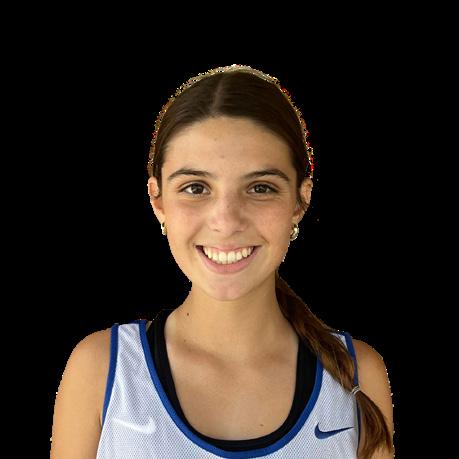
“I would love to be a teacher in the future and seeing the kids at the end of the day is my favorite part, and it really makes me happy.”
Katelyn Garrett (12)

News Editor By Cindy Liu
At the first home football game Sept. 6, administration and security directors introduced a new wave of safety measures to ensure the protection of those in attendance.
The idea of implementing security gates and metal detectors was not a new discussion. The school administration has been preparing the process of setting up these security systems for months and has been talking about it for even longer. “We were kicking around the idea first semester of last year,” principal Brad Griffith said. “We started looking at various solutions with a weapons detection system, and then landed on a specific company once the board received the information and authorized the purchase. [Then], this summer, district-wide, at various locations throughout the building, bullet resistant laminate was added to all of our windows.”
This is only the first step of many security measures to come. The usage of the metal detector gates at sporting events serve as a strong deterrent for violence, but also as a testing point to consider the implementation of the security gates daily.
“It all depends on how things go. You’re testing through the system, you’re getting kids acclimated to it.”
Brad Grifth Principal
After seeing the gates at the football games, some students have had a hard time imagining them being implemented at entrances in school. Anastasia Chostner (12) has some concern about how different school mornings may look in the future.
“It might be a bit difficult,”
Chostner said. “There are three whole entrances you can come in from, [so] it could be hard with people at arrival times in the morning.”
There are still issues to be addressed before the gates are implemented. One of these issues is the sensitivity of the system with hard-pressed metals like laptops and water bottles.
“The issue is we have 1,400 students with [laptops] in their backpacks,” Griffith said. “Every student is going to have to take out their laptop and raise it up in the air to put it beyond the sensor so the administrator and the support staff member can see.”
Many of the proposed solutions are under development and testing. If the detectors are put in at school daily, it will be a transition for everyone to adjust to.
“I would expect it’s just like traffic on Warson for the first two weeks of school,” Griffith said. “It’s a mess. Then, everybody figures it out, settles into a routine and it becomes manageable.”
ABOVE: Attendees walk through metal detectors to enter the opening home varsity football game versus Ritenour High School, Friday, Sept. 6. It was the frst event where security gates were implemented. “I felt like it was an airport,” Anastasia Chostner (12) said. “There were metal detectors and a much greater amount of cops.” (Photo by Vincent Hsiao)
CURIOUS? Scan here for more of the safety regulations
Teachers and students share their side businesses and founding stories
Features Editor
By Ira Rodrigues Jamie Gavril

They’re adorned with icing, sprinkles and sugar. Shaped into hearts, stars, clovers and puzzle pieces. Packaged into crinkly pastry bags, these mouthwatering treats look like they belong in a bakery. But although these treats are perfectly edible, they’re actually made for horses.
The treats are made by math teacher Jamie Gavril as part of her business, Snaffle Sweets Horse Treats, which she created in 2020.

he Kol Rinah fair, a Hannukah-themed exhibit, is busy this time of year. Amid the hubbub and bustle of voices, one booth, Nanico Jewelry, stands out. It glitters with artfully arranged earrings, necklaces and other ornaments. The business, run by Ava Stern (9), has been selling handcrafted jewelry for five years.
Stern began creating jewelry when she was in fourth grade, but didn’t take it seriously until seventh grade. She created an Etsy shop and began selling in craft
“[At first], I was doing [the treats] just for myself and friends. As I got better at making the treats, people encouraged me to start selling them,” Gavril said.
The business is run solely by Gavril, who makes all the treats by hand. Her process includes hand-frosting, molding and curing the treats, which can take hours to complete. Balancing her business with teaching is no easy task.
“I teach all day, so I usually end up doing treats at night,” Gavril said. “Having enough time to do it [is a challenge].”
Although Snaffle Sweets Horse Treats started unconventionally, it has now become a successful side business.
“[My advice is] start small and test it on friends and family,” Gavril said. Sometimes it just happens that it grows for you, and you don’t even have to try to go out there and sell it yourself.”
fairs so she could share her jewelry with others. This experience helped Stern grow as a business owner and artist.
“When you go to craft fairs, you learn a lot about what sells,” Stern said. “[There’s] a lot that you wouldn’t typically think about.”
Maintaining the business isn’t easy, and Stern has had to adapt to challenges in time and money commitment.
“It’s a lot of time commitment [and expense],” Stern said. “Getting out of your comfort zone and talking to people [is challenging].”
Despite these challenges, Stern’s passion for creating jewelry is the key to her business’ continued success.
“Try to do something you really like doing,” Stern said. “Follow your passions and see how you can make a profit off of that.”
How various students got involved in their businesses


“I freelance videos for YouTubers online. I started [in] seventh grade. With the COVID-19 pandemic in full swing, I had time, so I decided to make something for my future.”

“My sister started [Cardinal Lawn Care] when she was in high school. I run the employee side. I spend about eight to ten hours each weekend [on it].”
Students showcase their talent and passion for acting in the Muny
By Grace Huewe
Features Editor
Summertime for Adaeze
Loynd (11) and Landon Page (10) does not signify weeks of leisure and relaxation as it does for most. Rather, the moment that school is out, their true 9 to 5 begins. Constant work, daily rehearsals and collaboration with professionals outlines a typical day for the aspiring actors. These students are not merely dreaming of Broadway — they’re already making their mark.
The Muny, formally known as the St. Louis Municipal Opera Theatre, is a second home to Loynd and Page. Both began acting in productions at age 9 as members of Muny Kids and now participate in the Teens Troupe, an outreach program for teens.
“Since I was young, I’ve been going to the Muny shows, and
A timeline of Adaeze Loynd’s (11) and Landon Page’s (10) acting journey
it’s always just been a staple part of my family’s summer,” Loynd said. “I was so marveled by how well they put on the productions, and I’d always had this goal that I wanted to be in the Muny before I turned 10.”
The quick process of putting together a Muny production requires focus and commitment. Having just completed his sixth year, Page has the routine down through years of experience.
“We only have 11 days to practice before the opening show,” Page said. “We always learn dances with music first. Then, when we group up with the adults, they’ll place us in empty spaces and add us in.”
As they’ve grown up, the actors have made many transitions, from taking on new roles to learning
Information about the Muny
from their experiences and opportunities in the acting field.
“When I was younger, I wasn’t in as many numbers, but I didn’t take it for granted then because it was all so new to me,” Loynd said. “Every experience was the best thing ever. But as I started to get older, I was able to do heavier parts and act in shows that aren’t just entertaining, but also have a deeper meaning behind them.”
More to Know
Auditions for the Muny’s 2025 season will take place January through March.
34 actors are currently on the Muny Teens Troupe.
CURIOUS? Scan here for more information about the Muny and how to join it
Aside from acting, both Loynd and Page are year-round dancers and have acquired skills that go hand in hand with their theatre pursuits. Through their participation in the Teens Troupe, they are able to dance for crowds before the main show.
“It’s a 30-minute dance choreographed by choreographers from places like Los Angeles and New York,” Page said. “It’s helpful because you also get to know the people you’ll be working with all summer beforehand. You get really close.”
Loynd is appreciative of her experiences collaborating with professionals and the opportunities it has provided her with, helping her grow as an actor.
Source: The Muny
“I’ve gotten to meet so many cool people who have pursued the industry and made it far and big,” Loynd said. “It’s really great getting to talk to these people and have them as a mentor because of the relationships we’ve made along the way.”
2010 2011 2017
Loynd began dancing at the St. Louis Academy of Dance when she was 2 years old.
Loynd’s frst show was “Peter Pan” when she was 3 years old with her family.
Loynd joined and started acting in the Muny at the age of 9.

Despite the skills that Loynd and Page bring to the table, they are always looking to improve, whether that be through attending workshops or working with private coaches.
“My biggest strength when it comes to performing is being confident in what I doing,” Page said. “I’m trying to improve on actually emoting. I have an acting coach to help with emoting [as] it translates to both dance and theatre.”
For Loynd, it can be easy to turn towards comparison. Overcoming self-doubt is a challenge that she is constantly battling.
“With theater, you have to be a triple threat: singing, dancing and
Page joined and started acting in the Muny at the age of 9.

acting,” Loynd said. “I’m working towards becoming more comfortable with acting and my voice especially. It’s always such a mental block to get over the, ‘Oh, I’m not good enough,’ because you’re surrounded by so many people who are truly incredible.”
While the talent of the Muny actors is undeniable, it’s the community that they’ve built that makes the experience so valuable.
“You would think in such a competitive environment, everyone would kind of be hostile with each other, but everyone’s happy for [other’s] success,” Loynd said.
“It’s truly amazing seeing how far all these people I’ve met go.”
“ The people are truly are like a second family to me, and it is a second home to me.”
Adaeze Loynd (11)
Page started dancing when he was 9 years old to widen his skillset.
Loynd joined the Teens Troupe when she was 13 years old.
FAR LEFT: Landon Page (10) sings on stage during a performance. This was his second summer as a member of the Teens Troupe, where he got to participate in pre-Muny shows. “My favorite part is probably [the] Teens Troupe, because it’s mostly dancing, and that’s just what I like to do the most,” Page said.
LEFT: Adaeze Loynd (11) dances with the Teens Troupe. She has been dancing since she was 2. “I’ve been a dancer for so long and it’s defnitely my strong suit,” Loynd said. “I’m so happy I’ve gone as far as I have with that.”(Photos courtesy of Betsey Mooney)
AmelieLock(10)isanactorin theMunyaswell.Shewasnot includedinthisstorydueto herpositionasastafmember on Ladue Publications.
Inspired by his co-actors, Page reflects on his own ambitions for the future.
“I’ll probably participate in the Muny until senior year,” Page said. “I’ll do it all the way. And in the future, I want to do stage. Broadway is the big dream.”
Loynd understands the difficult reality that comes with chasing a career in acting, yet she sees acting being a part of her life for the long run.
“I’m definitely a realist,” Loynd said. “I know that it isn’t the best industry to pursue. I’m hoping to do it on the side and hopefully book something big one day like being on Broadway.”
Page acted in his all time favorite show, “Waitress,” at the age of 15.
FAR RIGHT: Saleeby displays a certifcate she achieved at the program’s culmination. The commendation is now framed in her bedroom, a motivator to continue adovcacy work. “As I’m working on this the summer before I go into ninth grade, there can be so many other open doors for myself,” Saleeby said.
RIGHT: Alongside her cohort members, Elle Saleeby (9) explores an art institute. The cohort was made up of individuals around the globe. “You defnitely heard so many accents in the room,” Saleeby said. “It was really good because it fosters a lot of diferent viewpoints in the experience that were all brought into the conversation.”
(Photos courtesy of Elle Saleeby)
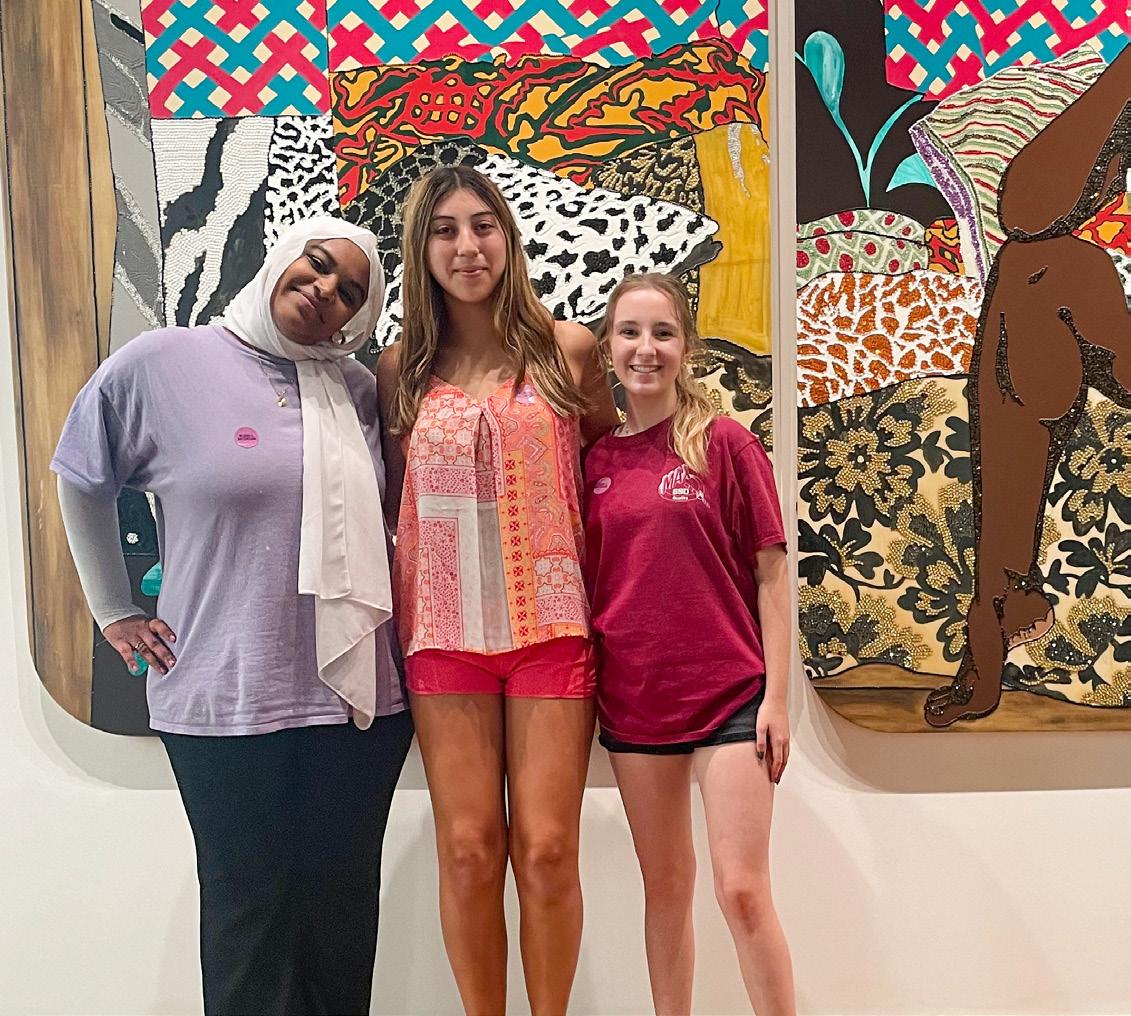
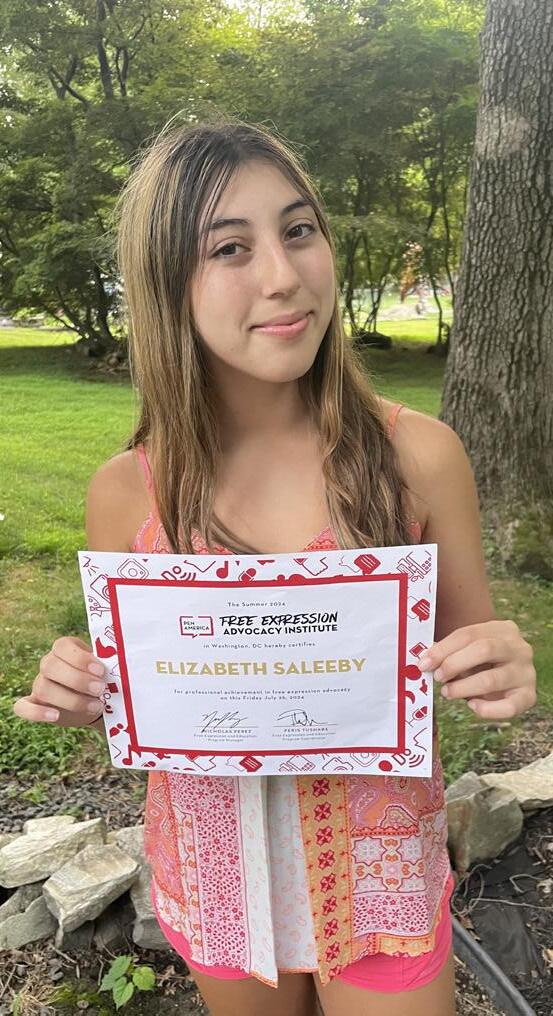
Elle Saleeby (9) attends summer institute on free expression in Washington D.C.
By Arti Jain
Executive Editor in Chief
In a Washington D.C. classroom, Elle Saleeby (9) raises her hand. In front of her stands a man from ArtLords, an organization that uses art to convey messages of peace. He discusses the dire need for freedom of speech in Afghanistan, and explains how his organization aids locals in creating art that represents their viewpoints.
Such conversations illustrate Saleeby’s experience at the Summer Free Expression Advocacy Institute. The week-long seminar was hosted by PEN America, a non-profit raising awareness of free expression’s importance.
“Expressing yourself through dance, movement, art and other writing is really important because a lot of people might not have the education to put their thoughts into words,” Saleeby said.
Saleeby pursued this opportunity due to a desire to be politically engaged.
“I care about my future, and I understand that I want my country to refect my belief and what I care about. The biggest way to do that is to get involved in politics.”
Elle Saleeby (9)
Middle School Apogee teacher Donna Matthews said that Saleeby particularly addresses humanitarian inequalities.
“Elle is always talking about how we need to think of others,” Matthews said. “You know, think about the wave that you create, or the butterfly effect you create with what you’re doing. I know Elle wants to not only build her voice, but to build the voice of other students in their campaigns.”
Saleeby recognizes that political involvement can be difficult, especially as most high schoolers cannot vote. However, she emphasizes that voting isn’t the only way to be involved. Regardless of the method of engagement, Saleeby says all youth should stay informed.
As a creative writer herself, Saleeby understands the importance of speech in the traditional sense. However, she notes that nontraditional forms of expression are equally important in providing creative outlets, especially in regard to underserved communities. P
Saleeby also participates in iCivic’s fellows program, a non-profit committed to advancing youth civic knowledge. Because of this involvement, Ladue
“Instead of being just defeatist, we need to stress the importance of going out and voting and getting involved with community engagement,” Saleeby said. “We need to understand how dire it is for our voices to be heard as the youngest generation.”
By Lilly Jacks
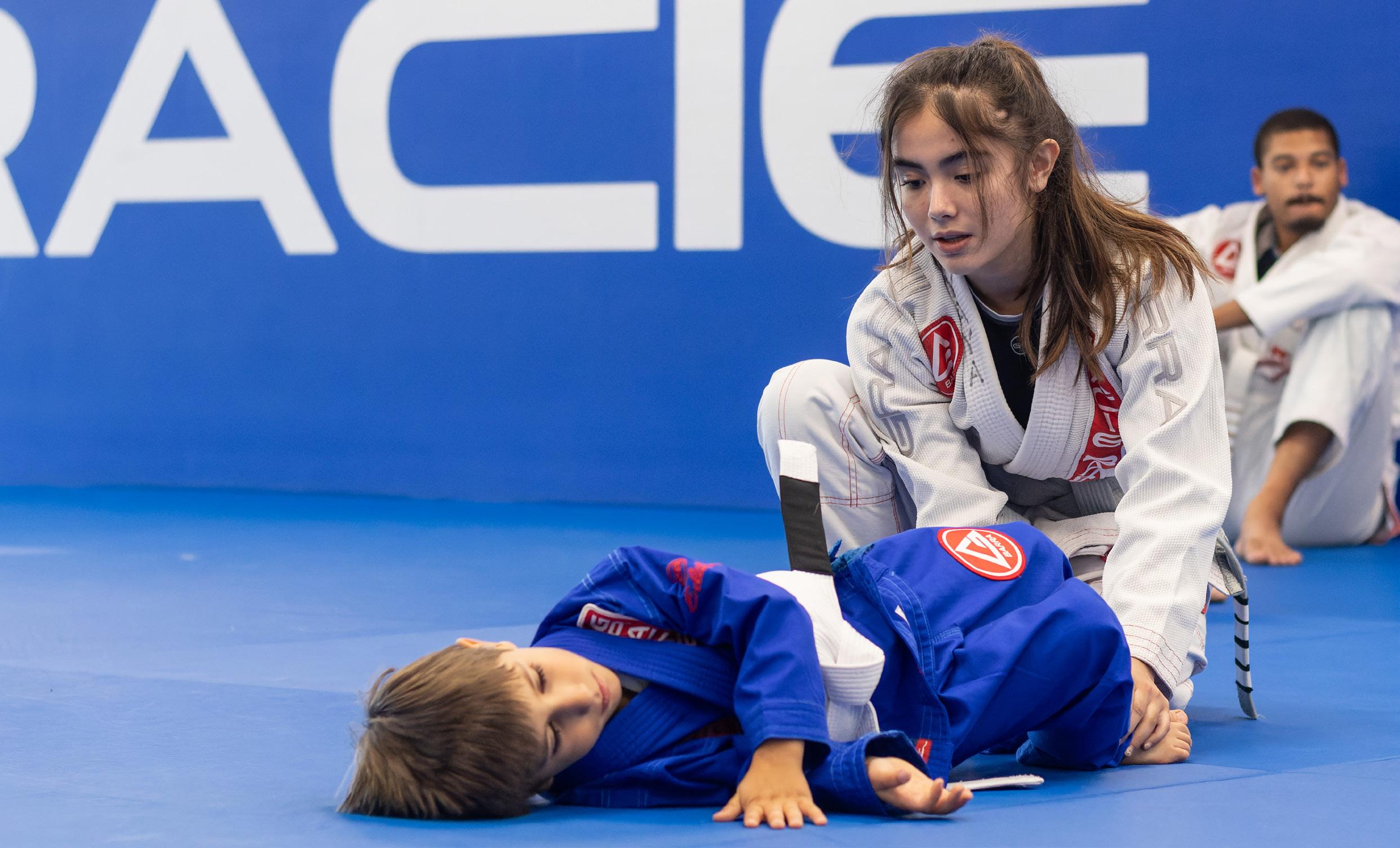

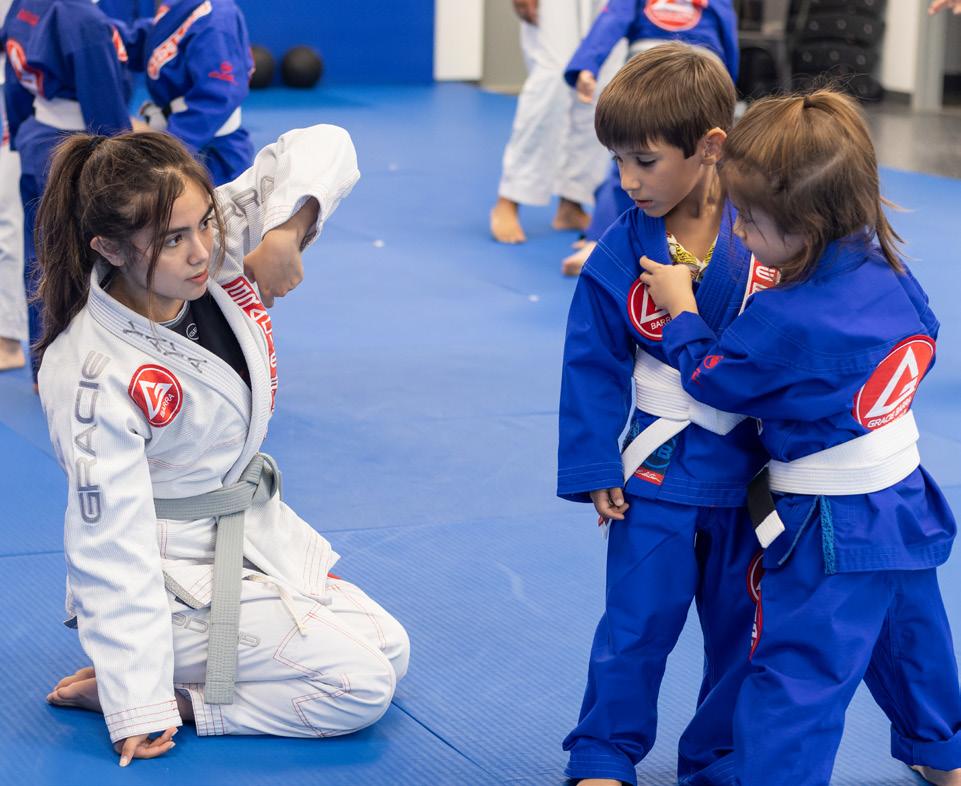
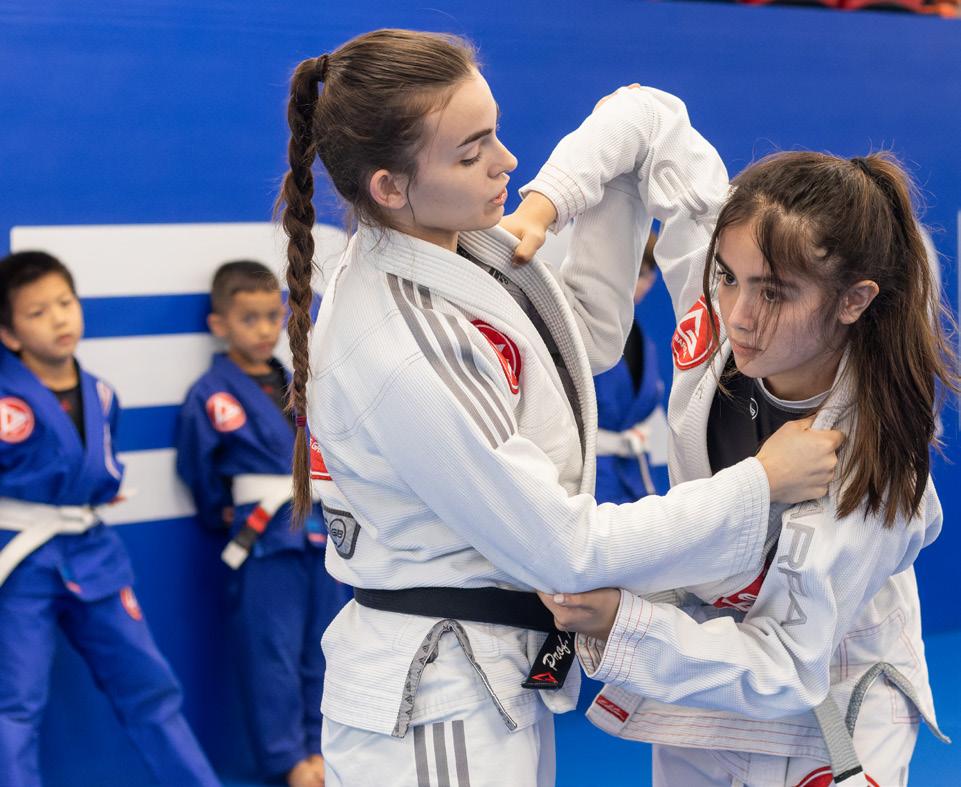
She teaches four days out of the week for about an hour after school. It used to be her father’s favorite thing to do back in Guam. Ungacta’s parents had her learn martial arts when she turned 10 years old. She started with mixed martial arts at the same studio where she found jiu-jitsu. She has been doing jiu-jitsu for the past fve years. “[In BJJ,] we focus on diferent moves every week but we always have a theme,” Ungacta said. “For example this week, we are focused on takedowns.”

Ladue Education Foundation hosts annual ‘Due Run fundraiser Sept. 21
By Vincent Hsiao
Editor in Chief
Ladue students, families and staf gathered at the McKenna Athletic Plaza and track for the 12th Annual ‘Due Run 4 Education, hosted by the Ladue Education Foundation, Saturday, Sept. 21. The ‘Due Run is a 5K and 1 mile run that fundraises the LEF nonproft organization for their grants and initiatives that help further the academic opportunities for students across the district. Participant registration fees and dozens of corporate sponsors help contribute to an approximate total of $25,000 each year. LEF provided entertainment including a DJ, performances from the Laduettes and cheer team, gift card giveaways and food. Medals were awarded to the fastest runners in age groups. High school students in the National Honor Society chapter volunteered at the event as course monitors, photographers and mascots from each Ladue school. “It was pretty hot in those costumes, I was the [Conway] ram,” Garon Agrawal (12) said. “It got pretty hot, but it was a really fun experience. I loved giving all the kids high fves, and everyone’s really excited to see us mascots.”
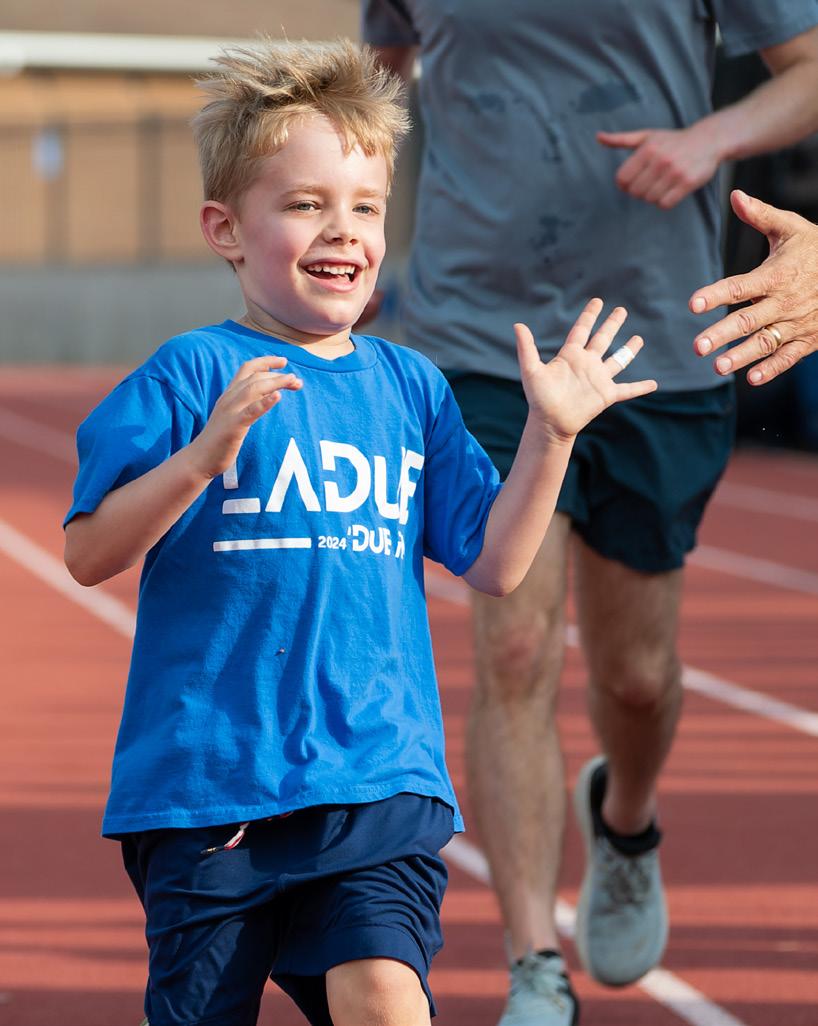




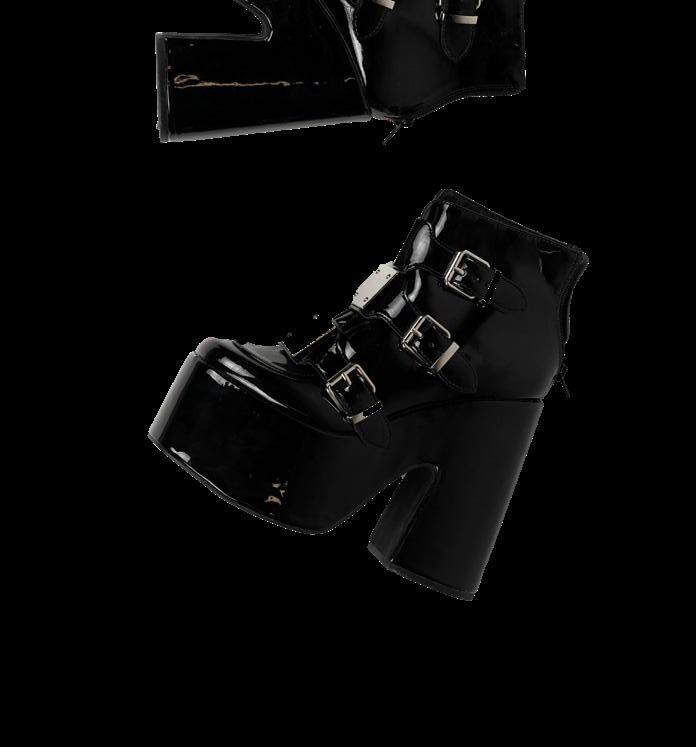

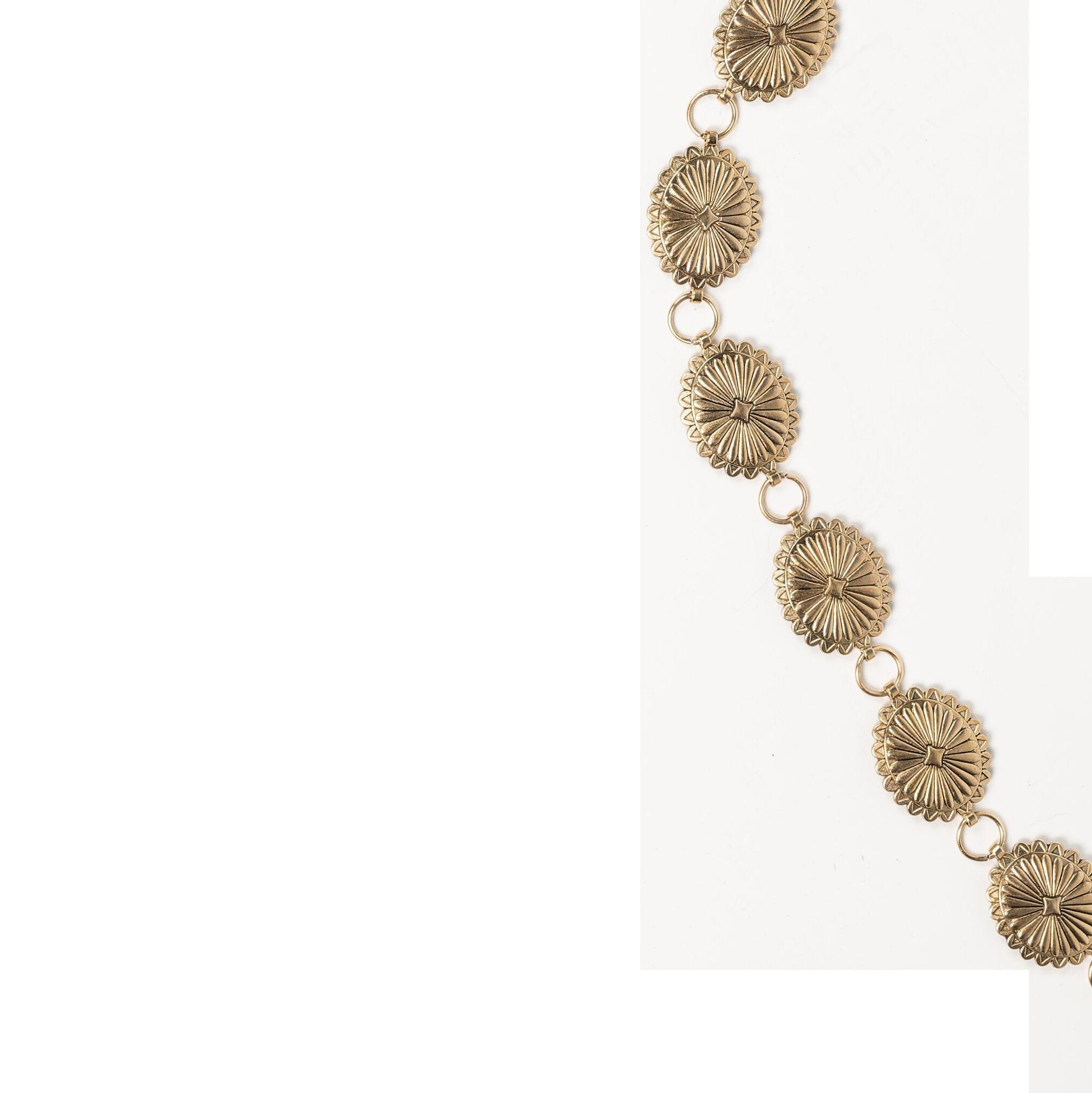
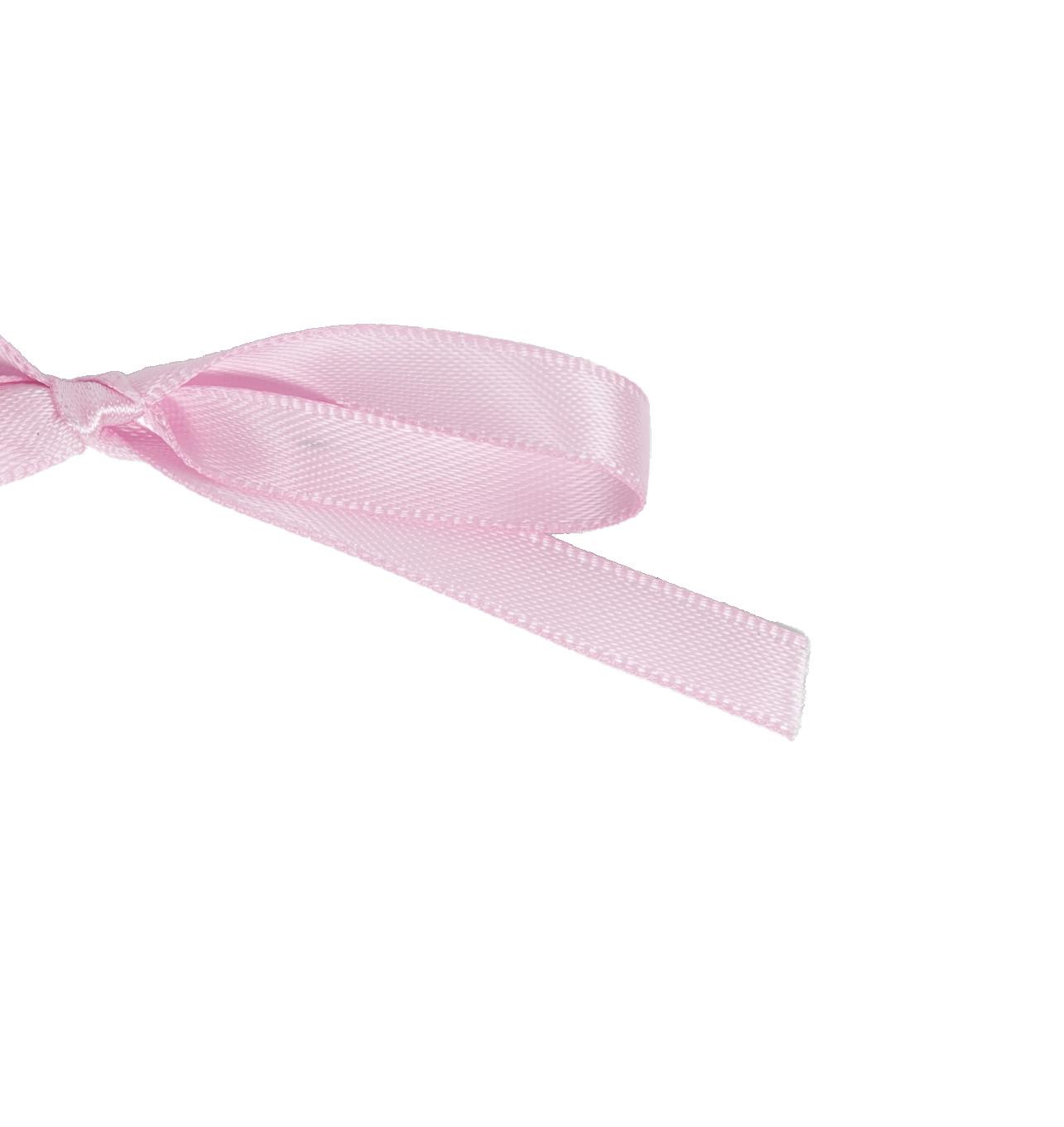
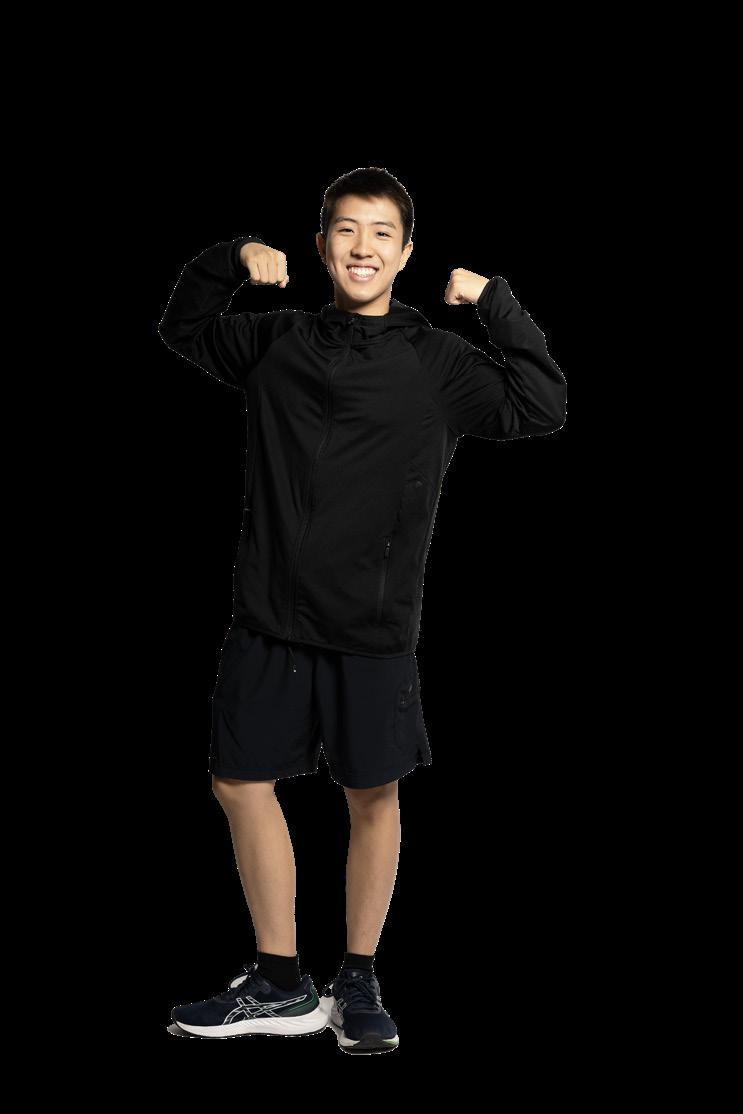
the intersection between fashion, identity and their various infuences

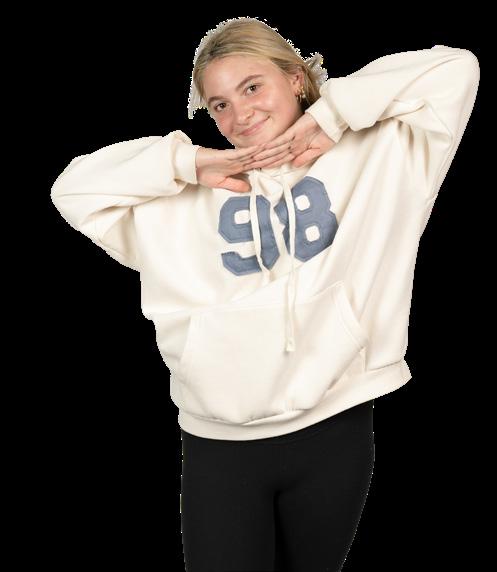
Staf Manager
By Nyla Weathersby Staf By Amelie Lock
Right before the bell on the first day of school, students line the hallways, chat with friends and compare class schedules. Amid the familiar buzz of excitement, the most obvious difference between the students can be seen in their clothing. One group showcases the up and coming TikTok trends like shopping on Edikted or attempting to mimic the look of a refined Cape Cod, ‘old money’ lady. Another embraces eclectic styles, layering different textures and fabrics, from silk, to leather, to lace, on top of one another to create something new. Others
keep it simple with ‘basic’ outfits, comprising leggings, hoodies and sweatpants. All of these styles have their stereotypes, and each exemplifies a part of identity. Clothing often carries more meaning than we realize. Whether choosing between minimalist or maximalist styles, what we wear can be a reflection of who we are. However, in a highly connected world, our wardrobe choices are shaped by a variety of facets. From school life and social media, to branding, and deeper social factors like race and gender, this begs the question, are we really what

In a Panorama survey conducted Sept. 16 among 197 respondents, 63.5% of students stated that getting dressed is, or sometimes is, a source of stress, with many ascribing this to the pressure to follow quick trends. For many, fashion is a positive source of self expression. Even certain students that categorize themselves as having a personal style and enjoying fashion can feel the daily stress of picking out an outfit.
“In middle school, I decided to start wearing what everyone else was wearing,” Eva VonAllmen (11) said. “I would constantly be picking up on [how,] ‘She’s wearing this, and they’re wearing that.’ But, I didn’t really like that style, so eventually, when I got into high school, I got into my own style,which doesn’t follow the crowd.”
It is not only confidence that is affected by microtrends and fast fashion. In economically diverse schools, money is a major factor when it comes to keeping up with the most recent high-priced clothing options.
“I think that when you are someone who cannot afford or you don’t want to be part of that trend, it also could be excluding,”
Most searched aesthetics and clothing styles
For the past 20 years, Grunge has been the overall most searched aesthetic on Google and for the past 5 years Y2K fashion has been the most searched style.
So far, the most searched aesthetic of 2024 is clean girl with coquette being a close second.
Source: Google Trends

Special School District teacher Tachelle Rhiney said. “I think we have to be careful with how much a trend influences us. It can have some influence, but don’t let it be your world.”
For many, fashion and style can seem like their world. 82.1% of Ladue students say that their outfit has a somewhat to large impact on their confidence.
Brands are able to use this to their advantage, with new products being pushed out everywhere, especially by brands that often have a target audience of young students.
“AT
SCHOOL,
IT’S
HARD BECAUSE IF YOU SEE OTHER GIRLS AREN’T WEARING SKIRTS AND DRESSES, EVEN IF YOU LIKE SKIRTS AND DRESSES A LOT, YOU’RE NOT NECESSARILY GOING TO SHOW UP TO SCHOOL IN THAT.”
(11)
This pressure can create difficulties for students making an attempt to fully express themselves through clothes.
“What somebody wears can be a pretty good indication of how

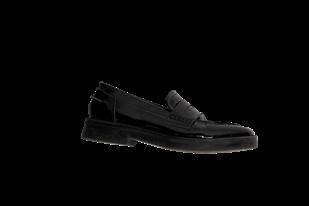
they want to be perceived,” Gray Baker (12) said. “That doesn’t mean that’s who they actually are.”
Even for teachers, finding a style that exemplifies their personality and identity, but also adheres to a professional dress code, can be a challenge.
“There are rules,” social studies teacher David Forbes said. “With rules, people find ways to either push the limits, find ways to break them [or] find ways to coordinate within them. I think in those formal settings, you are adjusting and reacting to the stimulus that is in front of you. Some of it is just depending on what you’re trying to express at that particular time.”
Cottagecore, Clean Girl, Y2K, Dark Academia, Indie. For some, that may look like a random list of jumbled, likely made-up, words. However, for many, these trends spark a clear image of sweeping social media trends, known as “-cores” or “aesthetics”, visual themes and labels for styles that have been created primarily by Generation Z. These fads, originally gaining traction during the pandemic, have their viral or trending moment, disappearing from the feed soon after.


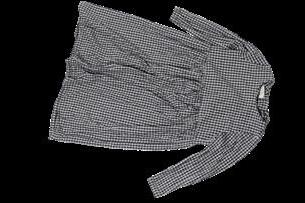

Tracking the most infuential and obscure microtrends and aesthetics of past years
Emerging from tumblr, infuenced by grunge, goth and indie aesthetics
ESSENTIALS: Black boots, black graphic tees and black beanies
Centered around themes of literature and a romanticized view of academic life
ESSENTIALS: Layering turtlenecks, wool trousers, loafers and blazers
Ofered escapism during the pandemic through rural/ pastoral inspired fashion
ESSENTIALS: Gingham, linen skirts and dresses and white rufe tops
“I think so many people see a microtrend as something that will give them status,” Baker said. “A couple people are engaging in a trend, so then everyone engages in it, and it just becomes a cycle.”
Over the past years, social media has made the trend cycle more rapid, and has put consumers in a position to consume advertising even when it may not seem like it. Microtrends are defined as trends that are fleeting, often generating millions of views but disappearing quickly or going out of style.
“IN A WORLD THAT HAS GIVEN US ACCESS TO EVERYTHING, I WOULD ENCOURAGE ANYBODY WHO IS STILL SEARCHING FOR WHO THEY ARE TO REMEMBER NUMBER ONE THAT SOCIAL MEDIA IS ADVERTISING. IT IS NOWHERE NEAR [THE] TRUTH ALL THE TIME.”
TACHELLE RHINEY
Special School District teacher
Many retailers have modeled their businesses to have the ability to churn out the newest trend just days after it goes viral, as seen with fast fashion companies such as Shein, which adds 2,000 new
products to its website each day. This can make it difficult for students to find their own identity with thousands of ads promoting new products on their screens each day. The effects of this can especially be observed today, with the hashtag, “microtrend,” being posted thousands of times daily on TikTok.
“[When] you see someone walking outside, you see their style, your brain says, ‘Oh, they must be like this’,” Moss Tunay (12) said. “But that’s not a full representation, because you have to talk to them, you have to see what they like, what they don’t like. That’s who they are.”
Despite their potential for having a negative impact, the reality remains that trends have always been a part of society, and can be implemented in a balanced way. From shoulder pads in the 1980’s to the Shirt Waists of the 1920’s, trends will always continue to rise and fall regardless of social media.
“I think it’s cute that people make these vibes for things,” Sancho Gatungay (12) said. “When it’s just normal things, like hobbies, and people just want to fit in, they just want to create a group, so they invent these ‘-cores’ to find other people who have similar interests and find themselves and create a community.”
How fast are the fastest fast fashion companies?
From glamorized labels of high-end designers to ubiquitous logos, the names sewn onto our clothes often carry more weight than the pieces themselves. The role of socioeconomics plays a heavy hand in the way we perceive and interact with clothing. On -trend items can be priced hundreds of dollars above the cost to make. This creates an industry that caters to the wealthy, which can be divisive for students.
10,000
35,000 450 million Shein has added upwards of individual styles to their app in a single day.
Sources: Harvard Business Review, Rest of World




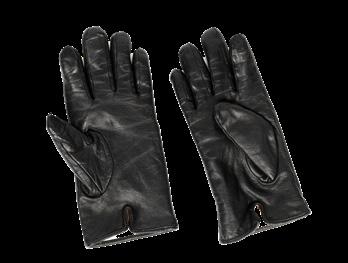
Zara releases new designs and produces more than products every year. 2023
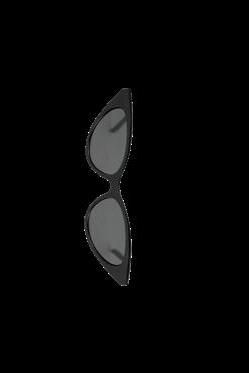
“People think different things about you based on what you wear,” Tunay said. “There’s this whole thing about, ‘If you dress a certain way that means that there’s a stereotype around you that must be true,’ which means that ‘Oh, you’re this class, you’re that class.’ I think class definitely plays into it.”
Some make the way they dress an opportunity to showcase an idealized version of themselves. Sometimes, dressing one way can even determine the group of people that a student hangs out with, acting as a point of relation. Students also alter their appearance to better fit within a desired group. The influx of videos advertising the newest, most on-trend clothes creates a societal pressure to dress in a particular way.
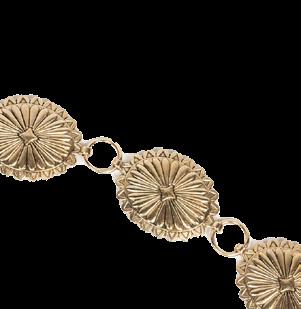



Characterized by whimsy, pastels and an embrace of hyper feminine style
ESSENTIALS: Bows, bows, more bows, frills, lace and mary Janes
Embodies the antithesis of “new money’s” loud logos and gaudy visuals
ESSENTIALS: Polos, sunglasses, collared shirts and fowy trousers
Combines boh elements with iridescent shimmering fabrics
ESSENTIALS: Maxi skirts, shell jewelery and knit fshnet tops
Students
Ladue’s student body weighs in on aesthetics, branding and more
Illustration by Celina Zhou
“I think [there’s] a group of young people who don’t feel like they look good unless they have a name brand on,” Rhiney said. “They don’t feel like they’ve arrived unless they have on name brands. Sadly, you have some groups who would rather spend money on [name brands] than necessities. I’ve seen students [who] don’t have pencil and paper or a notebook for school, but they have the latest shoes, they have the latest name brands on.”
“I think [there’s] a group of young people who don’t feel like they look good unless they have a name brand on,” Rhiney said. “They don’t feel like they’ve arrived unless they have on name brands. Sadly, you have some groups who would rather spend money on [name brands] than necessities. I’ve seen students [who] don’t have pencil and paper or a notebook for school, but they have the latest shoes, they have the latest name brands on.”
“I think [there’s] a group of young people who don’t feel like they look good unless they have a name brand on,” Rhiney said. “They don’t feel like they’ve arrived unless they have on name brands. Sadly, you have some groups who would rather spend money on [name brands] than necessities. I’ve seen students [who] don’t have pencil and paper or a notebook for school, but they have the latest shoes, they have the latest name brands on.”
“I think [there’s] a group of young people who don’t feel like they look good unless they have a name brand on,” Rhiney said. “They don’t feel like they’ve arrived unless they have on name brands. Sadly, you have some groups who would rather spend money on [name brands] than necessities. I’ve seen students [who] don’t have pencil and paper or a notebook for school, but they have the latest shoes, they have the latest name brands on.”
Many consider the luxury people have strived for as not being all that it is hyped up to be.
“I think [there’s] a group young people who don’t feel like they look good unless they have a name brand on,” Rhiney said. “They don’t feel like they’ve ar rived unless they have on name brands. Sadly, you have some groups who would rather spend money on [name brands] than necessities. I’ve seen students [who] don’t have pencil and paper or a notebook for school, but they have the latest shoes, they have the latest name brands on.”
Many consider the luxury people have strived for as not being all that it is hyped up to be.
Many consider the luxury people have strived for as not being all that it is hyped up to be.
Some people consider luxury and luxury items to be not as aspirational as they seem.
Many consider the luxury people have strived for as not being all that it is hyped up to be.
Many consider the luxury peo ple have strived for as not being that it is hyped up to be.
“THE
ONLY REASON WHY LUXURY BRANDS SUCCEED AT ALL IS BECAUSE OF THIS ARBITRARY IDEA OF ‘LUXURY,’”
“THE ONLY REASON WHY LUXURY BRANDS SUCCEED AT ALL IS BECAUSE OF THIS ARBITRARY IDEA OF ‘LUXURY,’”
SANCHO
“THE ONLY REASON WHY LUXURY BRANDS SUCCEED AT ALL IS BECAUSE OF THIS ARBITRARY IDEA OF ‘LUXURY,’”
“THE ONLY REASON WHY LUXURY BRANDS SUCCEED AT ALL IS BECAUSE OF THIS ARBITRARY IDEA OF ‘LUXURY,’”
GATUNGAY (12)
SANCHO
“THE ONLY REASON WHY LUXURY BRANDS SUCCEED AT ALL IS BECAUSE OF THIS ARBITRARY IDEA OF ‘LUXURY,’”
GATUNGAY (12)
SANCHO
SANCHO GATUNGAY (12)
“The quality is good sometimes, but even now, most of these brands do ship out to Vietnam, to China, to Africa to make their products,” Gatungay said. “The justification of [higher] prices [as a result of] increased quality doesn’t really exist anymore. It’s arbitrary and promotes classism, because people at the bottom look up to these brands and they want to buy them more, and the people who have these brands are seen as more successful.”
SANCHO GATUNGAY
(12)
“The quality is good sometimes, but even now, most of these brands do ship out to Vietnam, to China, to Africa to make their products,” Gatungay said. “The justification of [higher] prices [as a result of] increased quality doesn’t really exist anymore. It’s arbitrary and promotes classism, because people at the bottom look up to these brands and they want to buy them more, and the people who have these brands are seen as more successful.”
“The quality is good sometimes, but even now, most of these brands do ship out to Vietnam, to China, to Africa to make their products,” Gatungay said. “The justification of [higher] prices [as a result of] increased quality doesn’t really exist anymore. It’s arbitrary and promotes classism, because people at the bottom look up to these brands and they want to buy them more, and the people who have these brands are seen as more successful.”
“The quality is good sometimes, but even now, most of these brands do ship out to Vietnam, to China, to Africa to make their products,” Gatungay said. “The justification of [higher] prices [as a result of] increased quality doesn’t really exist anymore. It’s arbitrary and promotes classism, because people at the bottom look up to these brands and they want to buy them more, and the people who have these brands are seen as more successful.”
“The quality is good some times, but even now, most of these brands do ship out to Vietnam, to China, to Africa to make their products,” Gatungay said. “The justification of [higher] prices [as a result of] increased quality doesn’t really exist anymore. It’s arbitrary and promotes classism, because people at the bottom look up to these brands and they want to buy them more, and the people who have these brands are seen more successful.”
In society’s constructed hierarchy, the brand you adorn yourself with speaks for you. However, the most sought-after brands aren’t accessible to everyone, leading some to find their own way to live in “luxury.”
“Payless has some good shoes, but you can get off-brand shoes at Payless, but not very socially acceptable with the crowds that I
In society’s constructed hierarchy, the brand you adorn yourself with speaks for you. However, the most sought-after brands aren’t accessible to everyone, leading some to find their own way to live in “luxury.”
In society’s constructed hierarchy, the brand you adorn yourself with speaks for you. However, the most sought-after brands aren’t accessible to everyone, leading some to find their own way to live in “luxury.”
In society’s constructed hierarchy, the brand you adorn yourself with speaks for you. However, the most sought-after brands aren’t accessible to everyone, leading some to find their own way to live in “luxury.”
In society’s constructed hierarchy, the brand one adorns oneself with speaks for itself. However, the most sought-after brands aren’t accesible to everyone, leading some to find their own way to live in “luxury.”
“Payless has some good shoes, but you can get off-brand shoes at Payless, but not very socially acceptable with the crowds that I
In society’s constructed hier archy, the brand you adorn your self with speaks for you. However, the most sought-after brands ar en’t accessible to everyone, lead ing some to find their own way live in “luxury.”
“Payless has some good shoes, but you can get off-brand shoes at Payless, but not very socially acceptable with the crowds that I
“Payless has some good shoes, but you can get off-brand shoes at Payless, but not very socially acceptable with the crowds that I
“Payless has some good shoes, but you can get off-brand shoes at Payless, but not very socially acceptable with the crowds that
surrounded myself with,” Forbes said. “And I got shoes from Payless, a store my parents could afford.[It was] not very socially acceptable, so when I wore those shoes, I tried to hide them. ”
surrounded said. “And I less, a store my parents could afford. [It was] not very acceptable, so when shoes, I tried to hide them.”
Forbes’s experience reveals the social pressure tied to wearing affordable items even when they are more than sufficient. The perception of brands often overshadows quality, with the logo alone driving the purchase.
Statistics on student fashion
o does your ersonal style refect your teachin style?


“I feel like Athleta and Old Navy [are] not bad [or] low quality, but because it’s not Alo [Yoga] or Lululemon it’s not what people want, even though it could be the exact same thing,” Page said. “And it’s weird, because a lot of Lululemon leggings are made the same way as other brands are, and they just have a logo on it.
“I feel like Athleta and Navy [are] ity, but because it’s Alo [Yoga] or Lululemon, it’s not what people want, even though it could be the exact same thing,” Landon Page (10) said. “And it’s weird, because a lot of Lululemon leggings are made the same way other brands are; they just have a logo on it.”
What we wear says a lot about where we come from: our gender, race, ethnicity, etc. Managing one’s appearance becomes a conscious effort to navigate these societal forces.
“I think this has a lot to do with the way I was raised and brought up, specific to Black culture at the time from the 1970s to the 1990s, and growing up for Black Americans, we couldn’t change our skin color,” Rhiney said. “So you presented yourself with what you did have control over – [clothing] was what you controlled. You made sure you controlled yourself to present yourself [at] your best.”
The expectations placed on us as children are hard to shake, extending beyond race into other aspects of identity. Gender also shapes how we socialize and are expected to present ourselves.
“We have so many social norms and worries within society, even ones in which we don’t either acknowledge or we don’t realize,” Forbes said. “They say this,
On the Clock while students who spend 45-60 minutes are in the minority at 5.6%
66% of students spend 0-10 minutes picking out an outft and getting ready, while 5.6%. of students spend 4560+ minutes picking out an outft and getting ready.
How does your personal style refect your teaching style? 54% of students consider clothing an integral part of their personality, while Students who only spend 0-10 minutes getting dressed are in the majority at 66%
Stats on student fashion 62% of students believe fashion is a form of self expression, and 36.5% of students fnd getting dressed to be a source of stress.
“I always try to have a strong shoe game because it’s important to have a strong foundation.”
“Here you can write text. You can say anything you want that’s relevant to your reader but is not in the story.”
Teacher name
English teacher
Teacher title

“Here you can write text. You can say anything you want that’s relevant to your reader but is not in the story.”
“Monday through Thursday, I wear a tie to set that idea in class that it’s a professional place. Fridays, who knows. It’s very important to laugh at yourself and have other people laugh at you.”
Teacher name
Teacher title
Mike Hill Social Studies teacher
‘Girls wear pink, boys wear blue.’ Women typically get pushback for showing skin, but especially in sports it’s normal for boys to run around with a shirt off. ”
These unspoken rules often limit personal expression and reveal the inequalities in how society polices appearance. However, definitions of socially acceptable dress can vary greatly.
“In Speech and Debate, you have to be presentable,” Gatungay said. “Multiple of my friends and even I have gotten voted down in rounds because of the way we dress. People just seem more convincing, seem more presentable, [when they wear a suit]. What’s considered respectable [and] formal is more of a Western standard of dressing. It doesn’t reflect cultures around the world who have different formal standards. The fact that we view the most formal
“In Speech and Debate, youhave to be presentable,” Gatungay said. “Multiple of my friends and even I have gotten voted down in dress. People just seem more convincing, seem more presentable, [when they wear a suit]. What’s considered respectable [and] formal is more of a western standard of dressing. It doesn’t reflect cul tures around the world who have different formal standards. Thefact that we view the most formal
“Here you can write text. You can say anything you want that’s relevant to your reader but is not in the story.”
“I never know when I’m gonna have to crawl under a desk and unplug something, so I choose to wear things that are comfortable, but also a little bit stylish.”
Teacher name
Marteana Davidson Broadcast Technology teacher
Teacher title
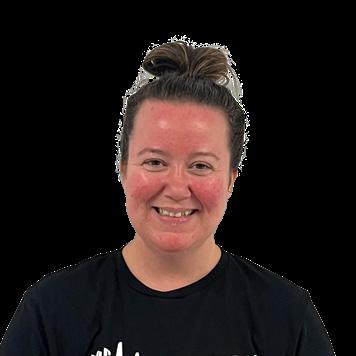
“Here you can write text. You can say anything you want that’s relevant to your reader but is not in the story.”
“I wind up not dressing up at all, just t-shirts and stuf, because of all the oil, and fre and grease. It lets me be a little more free and dirty, in a sense.”
Teacher name
Teacher title
April Dalton Foods teacher
western
dress as Western is indicative of this toxic, white supremacist idea that we have baked into society.”
Conforming becomes a way of managing perception. Just as roles and actions reflect facets of identity, dress also shapes how people are understood.
Conforming can become a way of managing perception. Just as roles and actions reflect facets of identity, style also shapes how people are understood.
“I think [as] people, we are always trying to put out markers that, in their own way, define us,” Forbes said. “For example, if I’m an artist, my art defines an aspect. [Being] a teacher, defines a piece of who I am. As a father, another piece as a husband, another piece. How I worship is another piece. All of these things are different pieces of me, and they all share a part of me. It’s kind of [like] they all accumulate to create the real me. And then there are the pieces that we don’t share. So the way that we dress is shared. It shows what we want people to see.”
“I think [as] people, we are always trying to put out markers that, in their own way, define us,” Forbes said. “For example, if I’m an artist, my art defines an aspect. [Being] a teacher, defines a piece of who I am. As a father, another piece. As a husband, another piece. How I worship is another piece. All of these things are different pieces of me, and they all share a part of me. It’s kind of [like] they all accumulate to create the real me. There are also pieces that we don’t share. The way that we dress is shared. It shows what we want people to see.” P
P
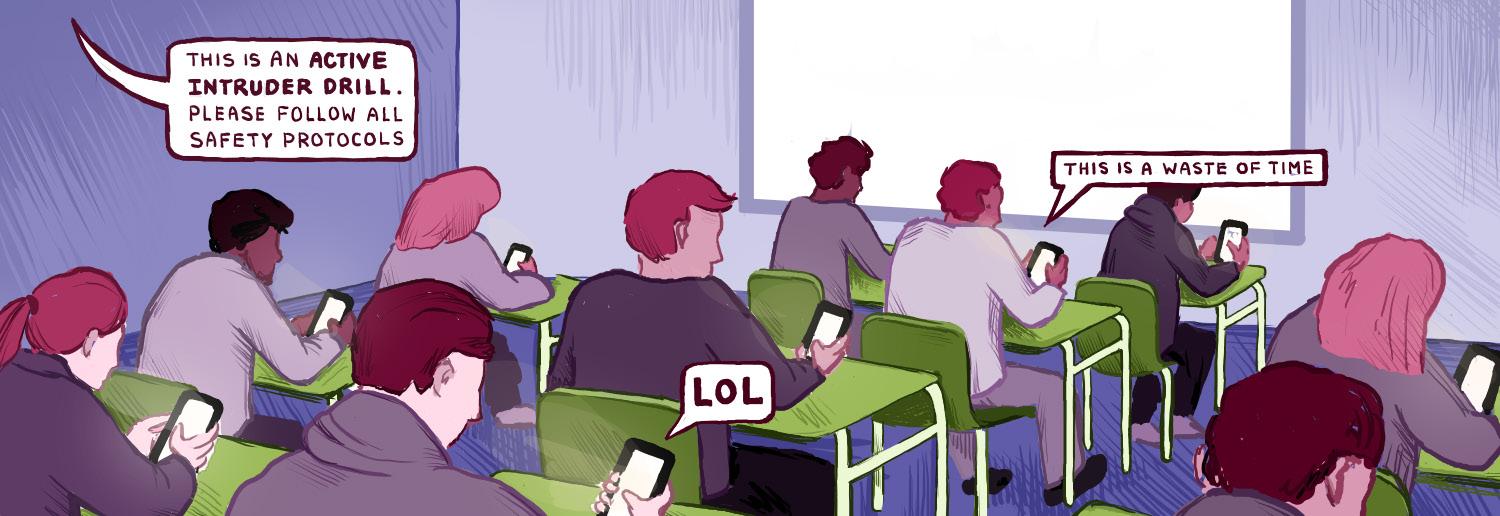
Afalse bomb threat was called into Ladue Sept. 18. The next day, students joked that someone should “take one for the team” by calling in another threat to get out of one more day of school. Calling in a false bomb threat in Missouri is a class E felony, punishable by up to four years in prison and up to a $10,000 fine. Safety is not a joke. In addition to bomb threats, shootings are another act of violence threatening high schoolers. According to Everytown Research, there have been at least 139 school shootings in the United States in 2024, resulting in 42 deaths and 91 injuries. In 2022, a gunman killed two and injured seven at Central Visual and Performing Arts High School, just 20 minutes away from Ladue. There is no guarantee that Ladue couldn’t be next. Students must be prepared.
The four E’s — educate, evade, escape and engage — have been drilled into students’ minds since stepping foot into high school. Within less than a month since the school year started, Ladue experienced an intruder drill, yet few people took it seriously. Many students occupied themselves with homework or social media instead of focusing on their safety. Students brushed off the drill as another meaningless box they had to check, when, in reality, it could save their lives.
According to the CDC, firearms are the leading cause of death for children and teenagers. Gun violence is a real threat to high schoolers. If students goof off during safety drills, they may be unprepared
Scan here for more on letters to the editor, guest essays, submitting corrections and the full editorial policy
in the case of a real shooter. In every classroom, students should spend a minute considering what they’d do if there was an intruder. Where is the nearest exit? What furniture could be used to barricade the door? What objects could be used to engage the intruder if necessary? Thinking ahead saves valuable time that students may not have in a real intruder situation.
According to the Secret Service and Department of Education, in 80% of school shootings, at least one other person knew of the shooter’s plans ahead of time and didn’t report them. If students hear anything concerning, even if they suspect it may be nothing, they should report it. If they feel comfortable, students can tell a teacher, administrator or other trusted adult. If they’d rather stay anonymous, they can utilize the anonymous tip line Courage2Report Missouri. A similar tip line allowed staff to confiscate a gun brought into Ladue High School Feb. 2. In case of an immediate emergency, always call 911.
In addition to intruder drill training, Ladue is implementing OPENGATE weapons detectors for the safety of students. The weapons detectors are being tested at home football games and may make their way to school entrances as early as January 2025. Students should be open-minded to these new systems, as they are implemented for their safety. The lines at the weapons detectors may be annoying, but they could save lives by preventing weapons from being brought into school like they have been in the past. Administration is doing their part to protect students; it is time for students to step up and take safety seriously.
Editorial Note: Each editorial, Panorama selects an issue that the staf thinks is important to address and expresses a view that belongs to the majority of the staf. Panorama welcomes the opinions of its readers and encourages letters to the editors. Panorama reserves the right to revise submissions for length as long as original intent remains unaltered.

FBy Madeline Fong
orget the pumpkin patch - apple picking is the only way to celebrate the new season. Pumpkins may be cooler to carve or to keep on your porch, but apples take the crown for the perfect fall treat.
Not only that, the only interesting activity involving pumpkins is to carve a mediocre art piece or make a halfway decent pie (let’s be honest, most people don’t bother). Maybe the patch will have a funky pumpkin, but that’s as exciting as it gets. Carving pumpkins is just a complete hassle. Most of the time, they end up rotting and attracting bugs until Thanksgiving. Otherwise, pumpkins are

PBy Ella Bender
Opinions Editor
umpkins are far superior to apples. Pumpkins have character. Spherical or oblong, smooth or wart-ridden, orange or white, no two pumpkins are the same. On the other hand, all apples are practically identical. Wow, another red sphere. How original. The rows of apple trees in an orchard are an eyesore. Talk about a monoculture.
Pumpkins come with endless possibilities. They can be carved into scary monsters or donned with silly faces. If a particularly lopsided pumpkin is not suitable for carving, no worries. Pumpkins make perfect living decor, ready to be composted at the end of autumn.

just large, edible decorations that rot on your porch.
Additionally, apples have an unbeatable amount of variety, making the apple picking experience unique, without sacrificing the tastiness. Apple orchards are nature’s candy store. The apple orchards have it all - from tart Granny Smith to sweet Honeycrisp apples. Pumpkins, on the other hand, are just big orange spheres. With such a wide range of uses, apples are the flavor buffet of autumn. From the soft, caramelized taste of an apple pie or the crispy, tart taste of a caramel apple, the all-encompassing apple flavor is a blessing for your taste buds.

What do apples bring to the table? Disappointment. Biting into a soft, bruised apple can ruin an entire meal, even an entire day. In addition to the false advertising regarding their taste, apples also promise to keep the doctor away. I begrudgingly eat apples every day, yet my doctor still wants to see me every year. It’s absolutely ridiculous. Picking pumpkins is an exciting endeavor and the pumpkins picked can serve as carved decorations or living indoor decor. Apples can do neither. The countless options for pumpkin appearance and purpose make pumpkin picking the perfect autumn excursion.

“I prefer apple picking over pumpkin picking because I don’t like any sort of pumpkin favor.”
Kelly Bian (11)
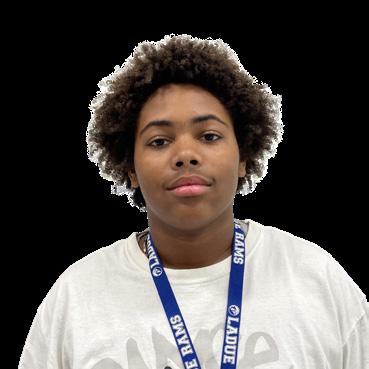
“I prefer apple picking because I don’t pick pumpkins. Who just sits around and eats pumpkins?”
Kole Milligan (9)

“I prefer apple picking [because] it’s easier to get the apples and it’s lighter weight.”
Sophie Cowlen (10)

“I prefer pumpkin picking. It’s more enjoyable to fnd the biggest one or funnest looking one.”
Douglas Brown (12)
Student protests over college endowments are justifable and should be acknowledged

DBy Grace Kweon
Opinions Editor
uring the months of April and May, students across the United States protested the spending of their respective college’s endowment through sit-ins, chants and campus occupations. It served as an example of the need for greater student influence and representation over collegiate issues, such as where an endowment is spent. Endowments are a collection of tax-exempt donations and investments. They can be used flexibly or endowed for a specific purpose, such as creating a new dining hall or funding research. For example, Harvard University stretches its $50.7 billion endowment over 14,000 individual funds, 30% of which are flexible and 70% endowed, spent at a rate of around 5% a year. Yet all endow-
ment money can be invested to generate more money for an endowment that keeps on growing. They also work as a rainy-day fund for economic uncertainties, such as the COVID-19 pandemic. But even during the pandemic, some elite colleges like Stanford University enacted layoffs and budget cuts instead of delving into their multi-billion dollar endowments. It doesn’t feel good for people shouldering piles of student debt to see billions resting on elite colleges through endowments. It doesn’t feel good for the students, faculty or alumni of over 100 small private colleges that had to shut down, merge with other institutions or cut off less profitable fields, such as humanities, since 2016. Endowments have become a savings account that for some colleges, aren’t being used when times are tough or for the benefit of the people. Most importantly, it enriches the super-wealthy or morally controversial causes.
62% of students believe the cost of college would impact their college decisions.
36% of students believe they will be afected by student debt.
Scan here for sources
surveyed 194 students Sept. 16.
For example, heavily endowed colleges use their endowments to invest in hedge funds and real estate, despite moral implications. Hedge funds manage investment money to gain positive returns while charging a 2% management fee and a 20% fee on profits. Despite being high-risk, high-fee, unregulated and market manipulators, the most successful hedge fund managers enrich themselves and their wealthy clients by the billions, widening the already drastic gap between the rich and the poor. Universities today have $130 billion invested in hedge funds. For example, Harvard invests 31% of its endowment in them, and, most notably, $2 billion in one managed by the multi-billionaire organization Baupost Group, which profits off of and owns $1 billion in Puerto Rican debt. Similar to hedge funds, the institution invests in exchange-traded funds, an investment fund traded on a stock
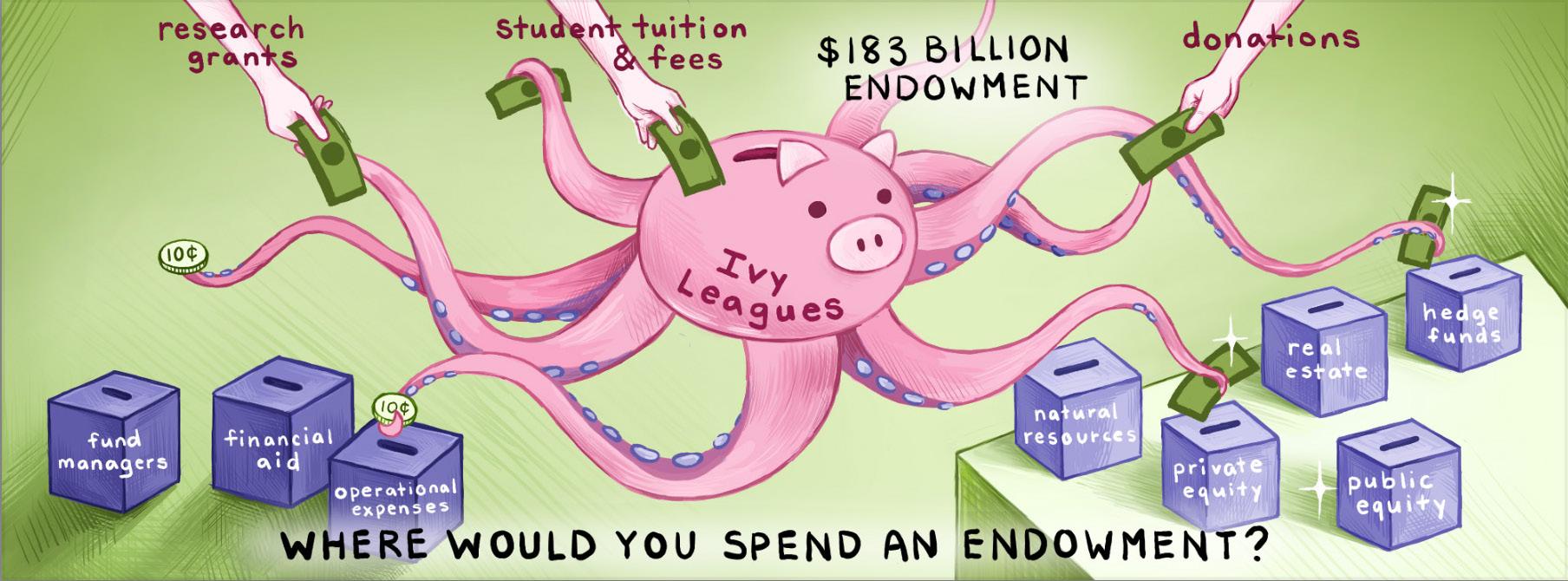
exchange. Two of the seven ETFs they invest in include CoreCivic and GeoGroup, billionaire companies that operate private prisons that mistreat, underpay and abuse their prisoners and profit off of immigrant detention and mass incarceration. Harvard students have protested divestment from these causes, to no avail.
“Billionaire
donors and money managers have shifted the focus of these institutions from providing students an efective education to sustaining a proftgenerating, investorenriching machine.”
Catherine Liu Business Insider Correspondent
Lastly, endowments invest in real estate, tax-free for educational institutions. Yale University’s properties were valued at over $4.2 billion in 2022, which continues to increase and harm the local city with its tax-exempt status. Harvard spent $1 billion acquiring land across the world, half of which was spent in Brazil, fueling deforestation, violence and violations of indigenous land rights. None of these institutions have increased their student enrollment substantially since 2002. Colleges have wealth, power and influence. Their investments make political, financial and social statements and the tuition of students are funding them– students who may not agree with those statements. It’s only reasonable for students to do what they have always done: protest. Student protests have worked and changed where college endowment money goes. Over 100
colleges divested from fossil fuels, 30 colleges divested from tobacco and 110 colleges divested from South African apartheid– divestments initiated from the late 1970s to 2010s.
However, at Columbia University, University of Chicago and over 60 other college campuses, students protesting divestment from the Israel-Hamas war were shut down by police with riot gear, were arrested or faced withholdings or rescindings of degrees. Over 700 students arrested for participating in these majorly peaceful protests were charged for misdemeanors such as trespassing, resisting arrest and disorderly conduct. Colleges released statements denouncing the disruption. In the end, The Evergreen State College was the only educational institution to fully divest from the war. It’s hard to believe student protests would’ve worked anyway– divestment is a serious political and financial decision, the war is controversial and there’s only so much students can do when billionaire fund managers sit behind their school’s management boards.
But students shouldn’t have to resort to protesting for their opinions to be heard because they deserve a voice of impact, too. Students should have a democratic seat on their respective endowment managing board. They should be able to access investment records and have a say on where money goes. It’s clear through the number and intensity of recent protests that existing student councils of these institutions don’t have enough influence on students or administrators. Giving student representatives a new, stronger voice would disincentivize disruptive protests, increase student safety and empower the youth. After all, democracy resolves conflict.
America’s prisonindustrial complex is a historical disgrace

The Columnist
By Frank Chen
The Civil War was, without question, one of the most impactful events in U.S. history. After four years of tough combat, Congress finally banned slavery — with a catch. As stated by the 13th Amendment, slavery is still legal in the U.S., “as a punishment for crime.”
For nearly two centuries now, this loophole has been ruthlessly exploited for financial gain. Prisons would force their inmates to work long hours for almost no pay, and sometimes they would literally be rented out to private interests. Today, the “prison-industrial complex” remains obscenely profitable. Workers that earn a couple cents per hour generate billions of dollars in profits every year.
Lately, Missouri’s been taking some good steps. “The Workhouse,” a St. Louis prison known for its terrible working conditions, is set to be demolished this December. Districts are embracing reformative instead of punitive justice. Even so, our penal labor system is still a national problem. Our justice system should be about reforming citizens so they don’t commit more crimes. It shouldn’t be about punishing people for the sake of doing so, and it definitely shouldn’t be about providing slave labor to multi-billion dollar corporations. Our national anthem describes us as “the land of the free.” Let’s keep it that way. P
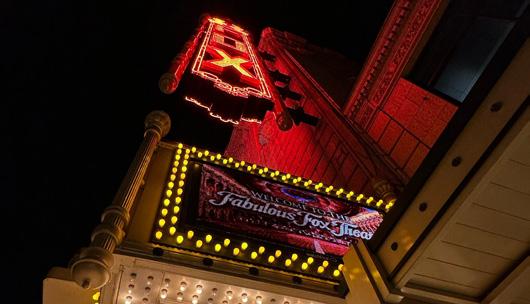
The Fabulous Fox Theatre
Sept. 24–Oct. 6, The Fabulous Fox Theatre kicks of its season with “Back to the Future: The Musical,” a stage adaptation of the iconic flm. This is followed up by Cirque du Soleil’s “SONGBLAZERS” Oct. 23–27, “A Beautiful Noise: The Neil Diamond Musical” Oct. 29–Nov. 10 and Tom Segura’s “Come Together” tour Oct. 18–19. The fall season fnally concludes with the vaudevillian-theme musical “Chicago” Nov. 29–Dec. 1, a tale flled with fame, drama, fortune and all that jazz.

This fall, the Saint Louis Art Museum ofers a variety of exhibitions with styles from traditional Japanese textiles to contemporary Indigenous art. The exhibit “Concealed Layers and Uncovering Expressionist Paintings” reveals details of expressionist works through conservation techniques, while “The Work of Art: The Federal Art Project, 1935–1943” highlights art from the New Deal initiated Federal Art Project. The museum also showcases the work of Jaune Quick-to-See Smith, a contemporary Indigenous artist, with the exhibition highlighting her connection to St. Louis.
Upcoming arts & entertainment events in Ladue and St. Louis

Sociedad Honoraria Hispánica creates mural celebrating Hispanic Heritage Month
By Aaron Lin
& Entertainment Editor
Students crowd around a vast canvas, while colorful markers dance across the white parchment and various Hispanic symbols blend into a vivid and rich mural honoring Hispanic Heritage month. This month, Sept. 15-Oct. 15, is a celebration of the cultures and histories of Hispanic and Latino communities across the U.S.
The Sociedad Honoraria Hispánica, also known as the Spanish Honor Society, created a mural that celebrates this special month. This artwork offers a colorful way to honor the cultural richness of this important month.
“A lot of people drew from their memory [of] what Hispanic culture was, like ties
they had to it,” Seal of Biliteracy Coordinator Aalaa Mahmoud (11) said. “They put a lot of things from what Hispanic culture is from media. Coco’s a really popular movie, so they have a lot of skulls. They have a lot of things from Dia de los Muertos and things they know from [their] younger days of [learning] Spanish.”
The idea was created by Mahmoud and Spanish teacher Maritza Sloan, the sponsor of the club. The members met together Sept. 19 to create the mural. A week later, it was displayed in the Spanish hallway.
“Because it’s Hispanic Heritage month, we wanted a way to get all the students in Spanish Honor Society really interested in celebrating the month and learn about famous figures in Spanish history and expand their knowledge on Spanish culture,” junior president Eva Kaul (11) said. P
Chamber Orchestra to perform opening concert Oct. 8
What: A performance of Pyotr Ilyich Tchaikovsky’s “Serenade for Strings.”
When and Where: Oct. 8, 7 p.m. at the Performing Arts Center
Relevance: The concert will showcase the musical mastery of the Chamber Orchestra. There will also be soloists, highlighting individual talent.
Thespian Troupe 1109 produces Fall Play and mural
By Tiya Kaul
Staf
Once upon a time, in a land far away, a boy who never grew up embarked on a thrilling adventure with four children and found friendship along the way. Does that sound familiar?
This is the plot of the renowned fairytale “Peter Pan.” One of the children and protagonists in the story, Wendy Darling, developed a close companionship with Peter, and towards the end of the tale, they parted with a kiss. But what happened after?
“Lost Girl” is a play by Kimberly Belflower describing the events in Wendy’s life following her return from Neverland, and how she retrieved her kiss from Peter in order to grow up. The theater cast and crew is producing this coming-of-age Fall Play. Led by the director, Jessica Winingham, the ensemble is set to perform Oct. 24-26 at 7 p.m. in the Black Box Theater. Before the show however, plenty of preparation is necessary for the cast to truly shine on the stage.
“[Sept. 16] was our read-throughs, which is when the cast and crew all sit around and read through the whole play together and talk about ideas,” Winingham said. “[Sept. 17, we worked] with an intimacy coach that helps with onstage kisses. We [brought] in [Southern Illinois University Edwardsville] professor Tress Kurzym to come and
help students with that.”
Winingham believes the kiss is a major part of the play since that is Wendy’s main goal. Stage manager and crew member Reva Shetty agrees that the kiss symbolizes Wendy gaining independence from Peter and her youth.
“She has given her kiss to Peter and cannot grow up or move on with her life back in the real world without it,” Shetty said. “It’s her realizing that she cannot give such an important part [of] herself to a man.”
Student director Chloe Lang (11) believes the message of this play is extremely important, and thinks it emphasizes the importance of accepting things as they are.
“For Wendy, she thinks that the only way for her to get over Peter is to try to get what she gave to him back,” Lang said. “But when she does meet Peter again, she realizes this isn’t what she needs, [and] that it’s not always about confrontation.”
To enhance the magic of the play, the backstage crew is designing a mural, using art to represent Neverland and Wendy’s journey to salvage her kiss. The
mural was designed by Gray Baker (12), who plays the Mother in the play, and the crew will paint the mural onto the Black Box Theater wall.
“We’ll project [the design of the mural] and then Mrs. Warner, a photography and art teacher at the high school, is going to help [the crew] trace it out,” Winingham said. “After it’s traced, they go get paint and they start blocking out the color of the mural.”
Baker’s role in the mural does not end there, as she will be guiding the process of transferring her design to the wall of the Black Box Theater. Due to this combined effort, Winingham considers the work on the mural to be productive.
“[Gray is] around to mentor the kids who are painting [the mural],” Winingham said. “It’ll be a collaborative process to achieve this mural on the wall.”
Shetty believes this mural will attract artistic students. She hopes it will bring light to an aspect of thespianism that has never been explored much before.
“I think [the mural will] definitely draw attention, [which] also includes a part of the community that usually doesn’t gravitate towards theater,” Shetty said. “Artists who usually don’t do theater [will participate in] the mural, so it brings a different part of the community together,”
Along with the mural, Winingham deems the play’s concepts relatable to students. She thinks that the play will allow them to understand important life lessons and skills.
“I hope students feel they have the power to help themselves go through hard things and come out the other side,” Winingham said. “[Wendy] goes through a lot to do that, so hopefully the students feel a sense of that as well.” P
LEFT: Ella Braig (12) strikes a questioning pose during play practice. Braig feels the play depicts many profound feelings. “During rehearsals, we spend a lot of time focusing on intense emotions characters undergo,” Braig said. “Our director has put a lot of emphasis on the idea of feelings revealing themselves internally versus externally.”
(Photo illustration by Lathan Levy)

By Sara Rohatgi
“Memoir of a Sparklemufn” by Suki Waterhouse
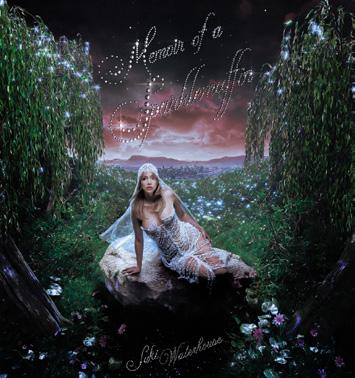
Source: Apple Music
“Memoir of a Sparklemufn” delivers a nonsensical, catchy vibe, perfect for late-night drives. Yet the tracks lack rhythmic variety, making each track feel quite similar. Although the album aims to explore how Suki Waterhouse’s roles as a mom and public fgure impacts her persona, it only scratches the surface.
Taking a risk with more distinct tracks and deeper lyrics could have enhanced the storytelling and overall impact. Though the album was overall very enjoyable, it’s obvious that she tries to pander to a younger audience. “Nonchalant,” in particular, was an absolute earsore.
Sorry, was this made for department stores?
“143” has the most performative, corporate pop tunes I’ve heard since Old Navy commercials. Not only does it exhaust the overdone 2010’s theme of vague feminism mixed with oddly written sexual empowerment, the tracks were simply hard to listen to. The lyrics are so thoughtless and repetitive that they sound AI-generated. It feels like a trashy attempt to throw together a relevant and trendy album.
Final Notes
It’s truly a missed opportunity to innovate and connect meaningfully with listeners. If this is the direction of Katy Perry’s music from now on, I can’t help but worry about what’s coming next. Unfortunately, this album is not a teenage dream.
“143”
by Katy Perry

Source: katyperry.com
“The
Alexander Technique” by Rex Orange County

The most striking aspect of the album is Rex Orange County’s choice of style. Departing from his previous works, he embraces an instrumental, calming rhythm, creating a refreshing contrast to his earlier upbeat hip-hop singles. The storytelling throughout the album conveys the message of optimism and how moving forward can create emotions like guilt, but also a sense of liberation. Though I felt the songs “Therapy,” “Sliding Doors” and “Alexander” hit heavily in carrying across this theme, many tracks felt like fller. They weren’t developed enough and resulted in a surface level commentary achievable by anyone who took 30 minutes to Google “how to deal with feelings.” That being said, I have to give credit to the song “Alexander”— a compelling spoken word piece that stretches over four minutes and 50 seconds. In it, Rex Orange County express the main themes of the album.
Final Notes
Despite some shortcomings, his vision still shines through in moments of genuine expression and makes the album worthy of a listen.


“‘Sour’ by Olivia Rodrigo because all the songs are really well written and I really like her storytelling.”
Charles Randall (12)


“‘Top’ by NBA YoungBoy. It has a wide selection of good songs all in one album.”
Alex Morris (10)


“‘The Rise and Fall of a Midwest Princess’ by Chappell Roan. It’s just so upbeat.”
Zoe Wroth (9)


BBy Nora Brunnquell
eetlejuice Beetlejuice” is a continuation of the original, chalk full of dry humor, colorful gore and of course ghosts. With a return of Michael Keaton as Beetlejuice, Winona Rider as Lydia Deetz and Catherine O’Hara as Delia Deetz, this Tim Burton sequel manages to remain faithful to the original by maintaining its hilarious and casual relationship with the concept of death. However, there is also a new addition to the cast. Jenna Ortega, who has starred in series such as “Wednesday” and “Scream”, is now joining in this fun and thrilling cult classic as Lydia’s snarky and rebellious daughter, the one and only Astrid.
Years after the events of the first Beetlejuice, Lydia Deetz is doing well for herself, profiting off her clairvoyant abilities by starring as a medium in a show about ghost hunting. That said, towards the beginning of the story, her
life takes a sudden twist with the death of her father. Lydia travels back to the infamous Ghost House with her daughter Astrid, her step mother Delia and her new boyfriend Rory, in order to attend her father’s funeral and try to sell the house. Over the years, Lydia has been tormented by visions of Beetlejuice wherever she goes, and these visions only get more frequent and more vivid when she returns to the house. It doesn’t help that her daughter doesn’t believe in ghosts, and sees her mother’s clairvoyant abilities as an act. In my opinion, this adds a layer of irony, considering how defensive Lydia was in the fist movie, while also adding good conflict to the story. This leads to quite the surprise when Astrid has her own experience with the underworld, forcing Lydia to face her fears and follow Astrid into its depths, which means coming face to face with the trickster demon himself. The strange feel of the underworld gives off an unsettling vibe. On the other hand, Beetlejuice seems to be dealing with his own
“I’ve
spent so much time talking to the dead, it’s time I started living. I want to make memories with people I love, rather than be haunted by them later.”
Lydia
issues after his ex-wife literally put herself back together with a staple gun and has revenge at the top of her to-do list. Personally, this movie is very similar to my own sense of humor, while also speaking to my strange obsession with the holiday, Halloween.
Deetz P
Just as hilarious as the original, this fast-paced, fun-loving and unexpected world means you never know what’s going to happen next. It manages to keep the feel of the original movie while adding a contemporary element with the appearance of new actors and characters. It may seem like just a comedy, but the meaning that this entire franchise is trying to convey is obvious. Despite this movie beating you over the head with its motifs of death, in reality, it is about life and how you should live it to the fullest. Overall, I give it 4.5 stars out of 5. Currently, “Beetlejuice Beetlejuice” is still in theaters, however, whether you plan on getting a ticket or if you wait for it to become available on streaming services, I hope you enjoy this movie as much as I did.
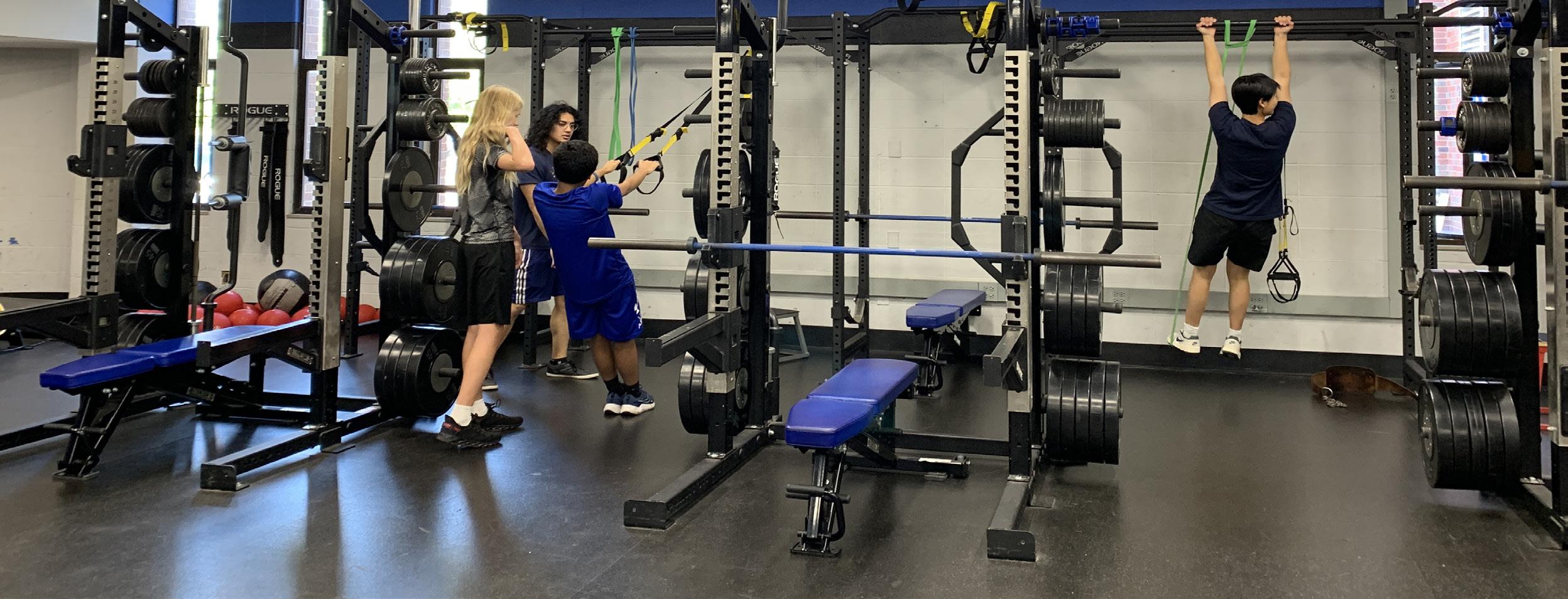
Calisthenics Club works to build community and confdence as students get stronger
Staf
After school, the weight room is filled with energy and excitement as members of the Calisthenics Club pour in, eager to start their workout. Calisthenics Club was founded by Max Limpiphiphatn (12), Shang Jiang (12) and Aiden Chen (12). The club has quickly grown, and welcomes 40 members every Wednesday after school in the weight room.
Calisthenics is a form of exercise that uses a person’s body weight and focuses primarily on balance, strength and flexibility. It is a great alternative to traditional high school sports due to its dynamic and accessible nature. It also can help high school athletes get stronger and develop a higher level of fitness and coordination during the off season when they have more free time.
“We created a club with the specific aim of helping people who wanted to lose fat [and] gain muscle, but didn’t have access to fancy equipment at home,” Limpiphiphatn said. “We want people to join the club who aim to improve themselves but don’t necessarily have the time or financial means of doing so.”
Since calisthenics requires little to no equipment, it’s convenient and accessible. In addition to physical strength, calisthenics offers several mental benefits as well.
“[My] confidence and perception of myself has gotten better,” Chen said. “I was really skinny in ninth grade. After calisthenics, I discovered bulking, and it really pushed me to better myself physically and mentally.”
“[Calisthenics Club] physically helps with muscle growth, body conditioning and burning calories. [It also helps] mentally because it’s an outlet for energy.”
Matthew Maier Club Sponsor
The three co-founders assure members that they will learn and grow in a positive and competitive environment. Chen emphasizes the importance of community and inclusivity.
By Victoria Derdoy P
“We wanted to create a communi-
ty where if people are thinking, ‘What if others judge me?’” Chen said. “Our whole goal is to bring each other up instead of down. We’re trying to create a judgment-free environment.”
As part of running the club, Limpiphiphatn, Jiang and Chen create groups based on proficiency and establish a benchmark to correct members on form in order to maximize movements and avoid injury. The fundamentals of calisthenics include the push up, chin up and plank, but these skills can be adapted to match a person’s fitness level.
“[These exercises are] so useful because they can be modified to one’s specific needs,” Jiang said. “If you already can do 20 to 30 pull ups, this exercise wouldn’t help you, but you’re able to add weights and progress in strength that way. Even though these exercises by themselves might be easy, there’s so much diversity in them that they can be used to train, even for experts.”
The three see a successful future for the Calisthenics Club and plan to grow the club by advertising on social media. Anybody of any skill level is encouraged to join, no experience is needed.
“Just show up,” Chen said. “We have many different groups and will accommodate anyone.”
Various clubs ofer a safe place for students to exercise
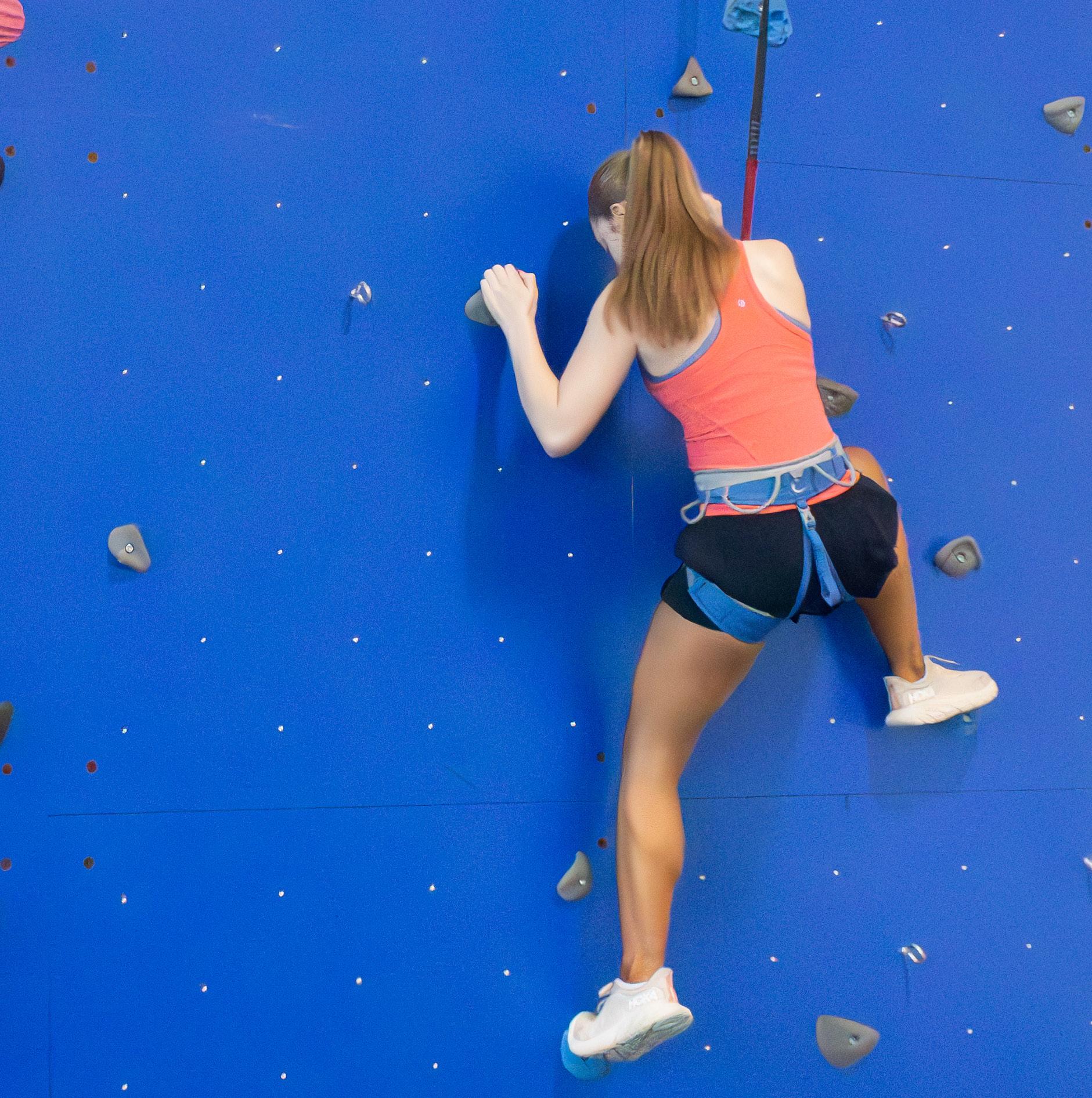
At the frst Climbers Club meeting Sept. 26, sophomore Victoria Fox (10) climbs the Climbing Wall. Similar to other members this is Fox’s frst year participating in the club. “I’m excited to join rock climbing club as I love to rock climb,” Fox said. (Photo by Levi Peace)

Emily
Hogan Club Sponsor
“Climbing is like jigsaws on the wall, and you have to learn how to prioritize your body movements in order to go up the wall in the correct path. Climbing creates a fun challenge.”

Matthew Maier Club Sponsor
“[Powerlifting and Olympic lifting] gives [students] an opportunity to [have fun], but it also teaches good health skills that can be transferred not just while you’re in high school, but later on in life.”

Q: What inspired you to join pickleball club?
A: “My brother Sawyer started the club his junior year so I joined as a sophomore and co-founder.”
Q: What do you enjoy most about pickleball club?
A: “I enjoy getting together with friends and being outdoors and active.”
Q: What do you think makes pickleball club unique?
A: “Some things that make it unique are the fact that anyone can play, you don’t need experience.”
Q: Could you describe some of the most memorable events or games the club has organized?
A: “Last winter we did an indoor tournament which was super fun.”
Q: What is you favorite thing about the pickleball community?
A: “An amazing thing about the pickleball community is that you can play anyone no matter their age, experience level or gender.”
Scan here for the Pickleball Club‘s GroupMe
Boys varsity soccer elects non-returners for all three captain positions
By Ryan Snyder
Health
& Sports Editor
To elect captains in high school soccer, each player casts an anonymous vote, with the three people receiving the most votes being named captains. These captains are designated as the leaders, responsible for ensuring the team’s success on and off the field. In the case of varsity boys soccer, Braedan Wallace (12), Tommy Edrington (12) and Avi Levin (12) were voted as the captains, despite not playing for Ladue the previous year.
Wallace opted to play Lou Fusz MLS Next instead of Ladue his junior year. Despite the high level of play at MLS Next, a highly competitive division filled with future college players, the benefits of Ladue soccer prompted a different choice Wallace’s senior year.
“With club soccer, you’re playing to make yourself look good,” Wallace said. “Transitioning to high school, you’re playing to win with a team you care about.”
Edrington also decided against playing for Ladue in favor of Lou Fusz MLS Next last year. Given this year is his last chance to play Ladue soccer, Edrington reconsidered what team to play for.
“MLS Next wasn’t the team dynamic I wanted,” Edrington said. “I thought if I did it again this year

then I’d be throwing away mt last chance to play on a team with a lot of my good friends.”
Levin elected to play for Scott Gallagher MLS Next the past two years rather than Ladue. Despite the MLS Next’s advanced play level, other factors motivated Levin to return to Ladue Soccer.
“With high school soccer, everything is about the team.”
Avi Levin (12)
With club soccer, you likely only see your teammates for a few hours a week. School soccer is drastically different.
“There’s a different connection seeing your teammates everyday instead of just on the soccer field,” Edrington said.
It is abnormal for all the captains to not have played for the team the previous year. But given that the three captains were already acquainted with the team, Wallace doesn’t see a problem.
“We’re all good friends with the soccer team, so it was an easy transition,” Wallace said. “They voted for us, so I don’t think
there are any problems.”
Levin believes himself, Edrington and Wallace were thecorrect selections for the three captain positions. Levin sees their respective skill as a reason that they were chosen.
“Tommy and Braedan were my top choices as captain, excluding myself,” Levin said. “Between us, we have our best defender, one of the best midfielders and our best forward.”
Good captains are tasked with combatting potential team issues. It’s imperative that the captains can work with each other to combat possible problems.
“The team looks to us when there’s a problem,” Edrington said. “Collectively, Avi, Braedan and I can come up with a good solution that works well for everybody on the team.”
Coming off of a state championship appearance, the team is very confident. With a 8-4 record as of Sept. 29, the team is positioned well for playoff success.
“Not only are all our starters good, but our bench is deep,” Wallace said. “Our district is hard, but I’m still expecting a lengthy playoff run and maybe a state championship if we play to our potential.”
something
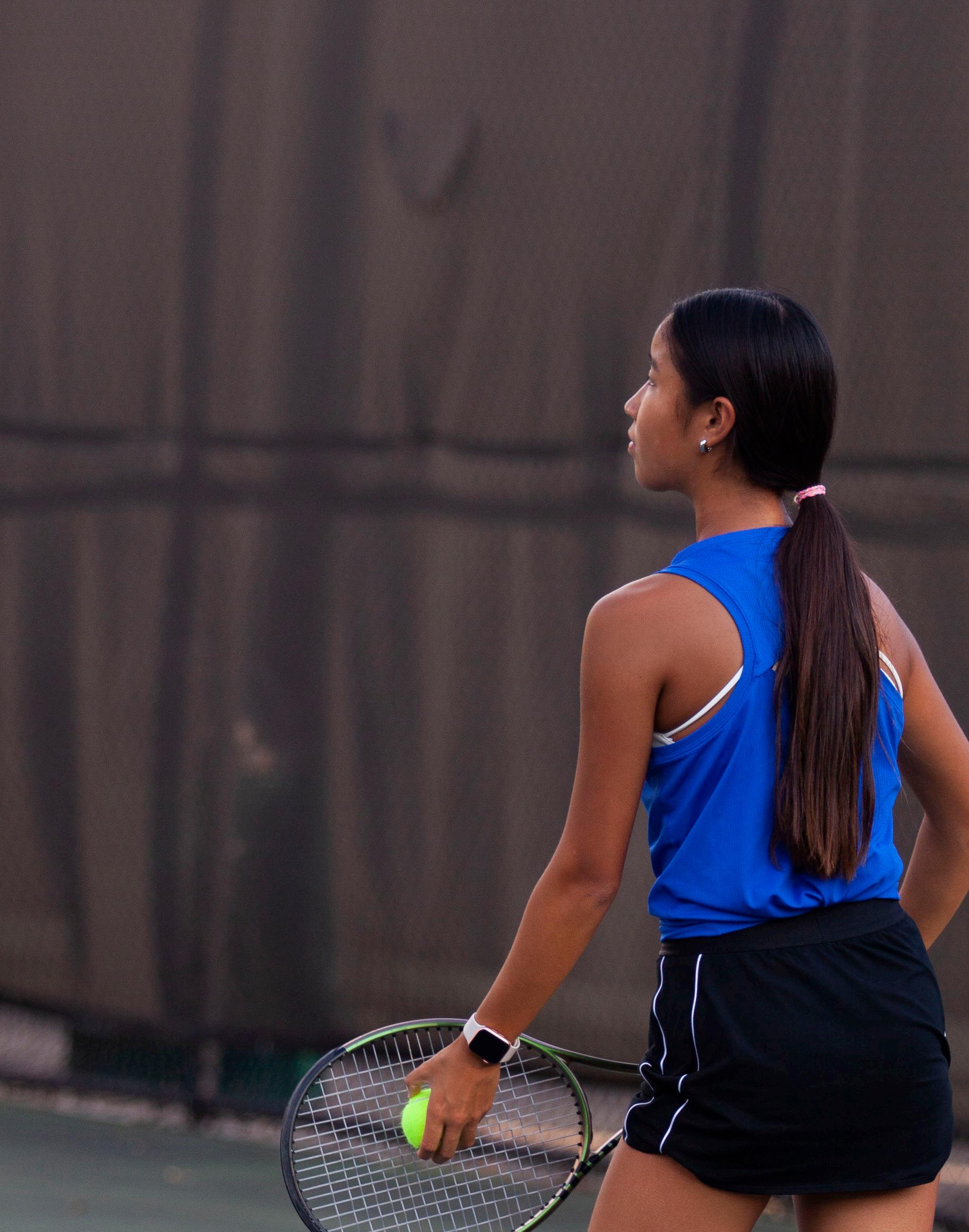
By Mason Eastman
Angela Chen (11) has been playing tennis since she was 8. Like most kids, Chen had tried other sports before tennis to see what she would like. Maybe the grip on her racket was just right the day she tried it out, or she played with a lucky tennis ball, but it was quickly apparent that those other sports couldn’t rival her love for tennis.
There are many aspects to achieving greatness in one’s sport, and for most it is not a linear endeavor. However, with a balance of natural talent and a strong work ethic, it may be possible. Chen is no exception to this concept. For Chen it is essential that she follows a rigorous tennis practice schedule.
“I am always training,” Chen said. “I try to do weights, mobility and agility, and I’m playing tennis every single day, working on different drills and techniques. I may focus on a specific weaknesses so that I am in my best shape and play my best.”
Jenna Song (11), one of Chen’s former teammates, highlights that Chen is someone players look up to on and off the court. Chen sets the standard of play, and off she is able to be a good friend and a teammate.
“Her ability to control [the ball] is crazy,” Song said. “It’s insane to generate that much power and precision. It is something that everyone admires
when they see Angela play.”
Having been a two-time state champion, attending national competitions and playing some of the best youth players in the country, Chen has her fair share of accolades. It is easy to confident while winning every match, however the true strength of an athlete reveals itself during the hardest times.
“Having bad matches is common, probably 1 in 5 matches is when I actually play well,” Chen said. “The rest of them I have to figure out a way to win. Even if I am not playing my best, I can’t let it get to my head. If I lose I have to focus on having a good attitude so I can bounce back.”
Chen’s coach, Troy Bray, has been training Chen for years, watching as she progresses. He hopes that she will be able to play tennis at the collegiate level in addition to enjoying the sport well into her adult life.
“I’ve seen too many kids say, ‘Well I just have to get through college, and then I don’t have to play tennis anymore,’” Bray said. “That disappoints me because I’ve made tennis my life. I hope Angela and other kids will continue to make tennis a lifetime sport and enjoy it.”
